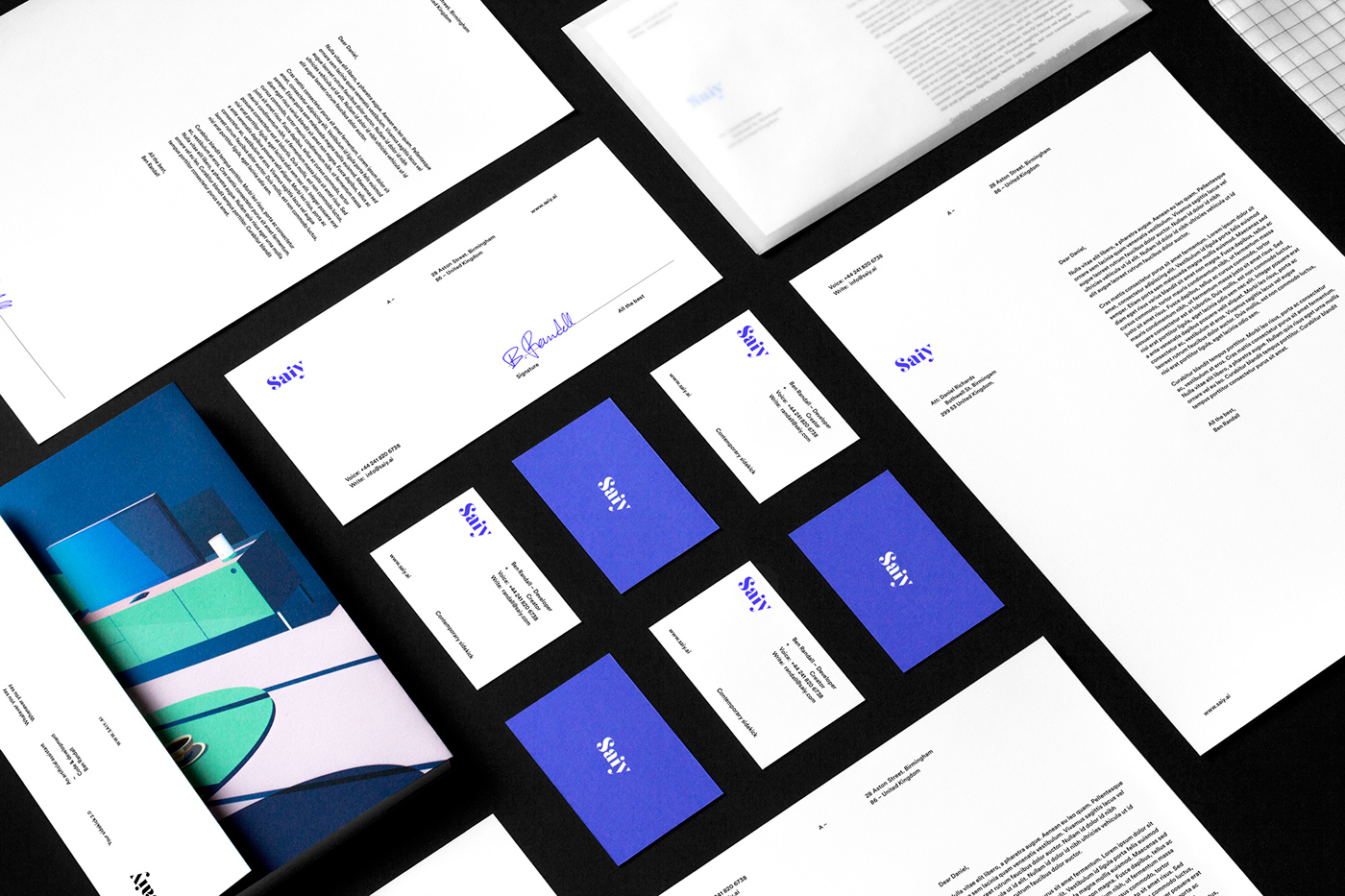
Brandbook design examples
Our most recent collection of Brandbook examples.
We curate topical collections around design to inspire you in the design process.
This constantly-updated list featuring what find on the always-fresh Muzli inventory.
Last update: 12/11/2025

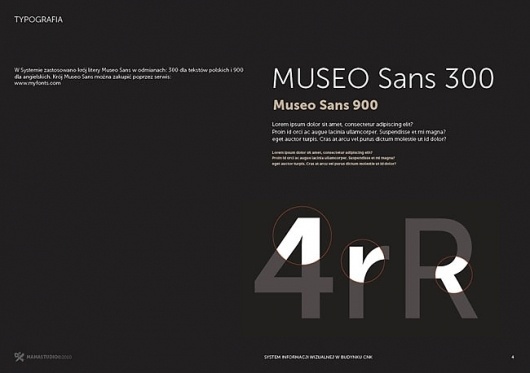
Copernicus Science Centre | Identity Designed #branding #guidelines #book #corporate #brand #identity #standards
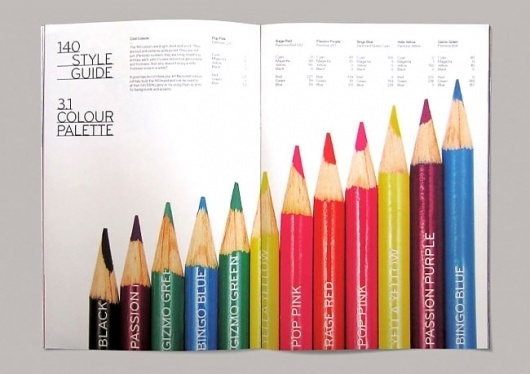
140 | Identity Designed #branding #guide #guidelines #book #brand #education #identity #standards #style
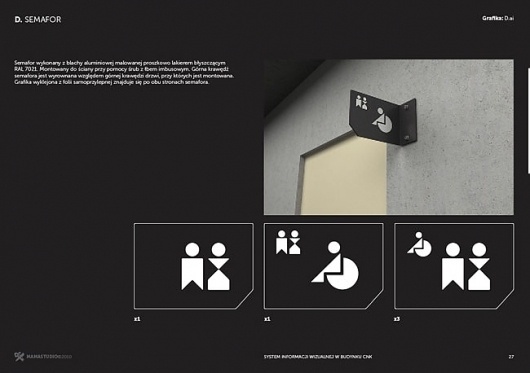
Copernicus Science Centre | Identity Designed #branding #guidelines #book #corporate #brand #identity #standards
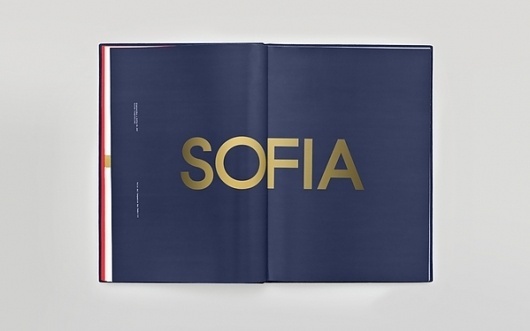
Sofia by Pelli Clarke Pelli Architects on the Behance Network #brand #identity #book #stationary
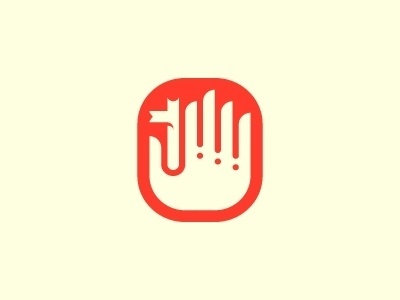
Dribbble - Bookstore Logo. by Tim Boelaars #mark #book #brand #identity #bookstore #boelaars #logo #hand
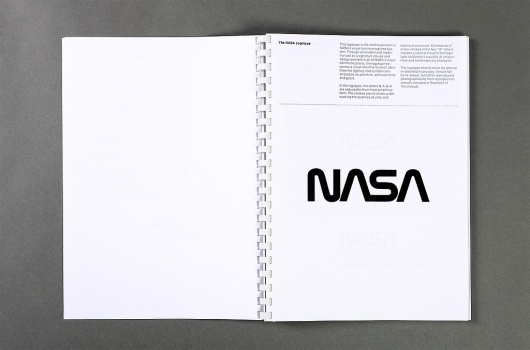
All sizes | NASA 1976 guidelines | Flickr - Photo Sharing! #branding #nasa #guidelines #book #brand #identity
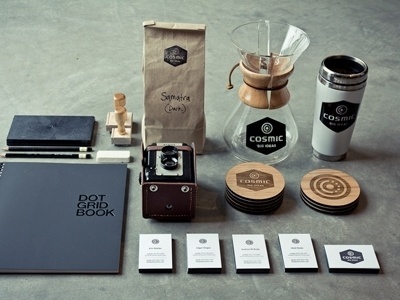
Dribbble - Cosmic Brand Kit by Eric Ressler #business #card #book #brand #identity #coaster

All sizes | NASA 1976 guidelines | Flickr - Photo Sharing! #branding #nasa #guidelines #book #brand #identity
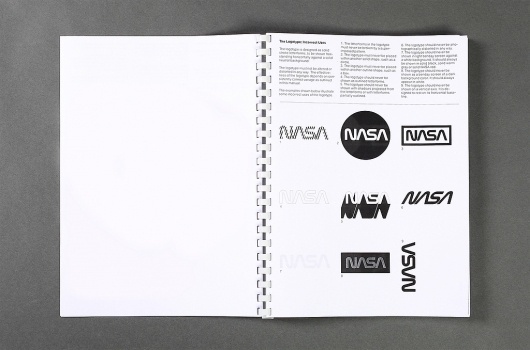
All sizes | NASA 1976 guidelines | Flickr - Photo Sharing! #branding #nasa #guidelines #book #brand #identity
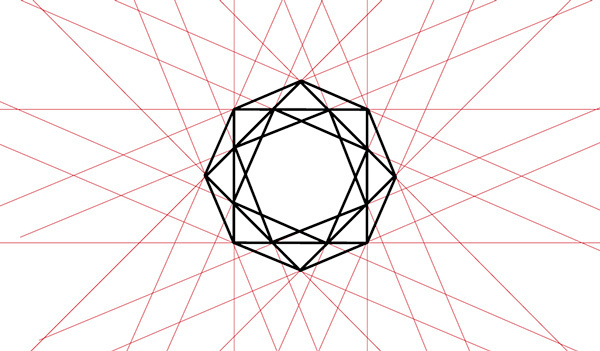
Gemma Software on Behance #tech #shade #branding #packaging #diamond #design #software #book #jewel #corporate #gem #precious #identity #brand #poster #stationery #website #logo #italy #technology
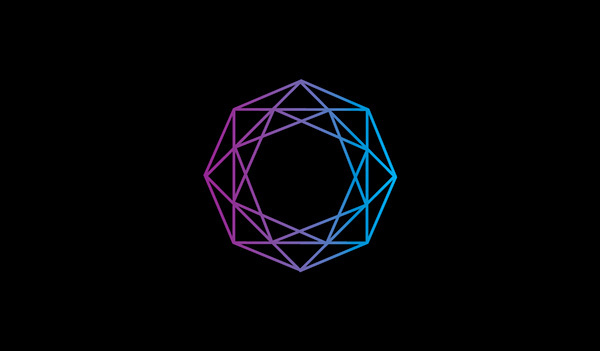
Gemma Software on Behance #tech #shade #branding #packaging #diamond #design #software #book #jewel #corporate #gem #precious #identity #brand #poster #stationery #website #logo #italy #technology
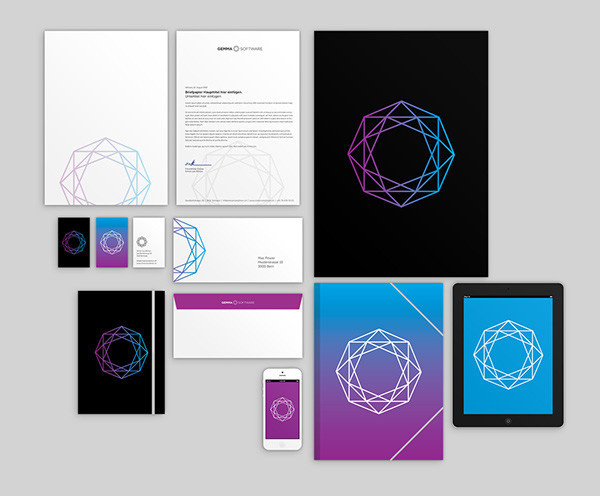
Gemma Software on Behance #tech #shade #branding #packaging #diamond #design #software #book #jewel #corporate #gem #precious #identity #brand #poster #stationery #website #logo #italy #technology
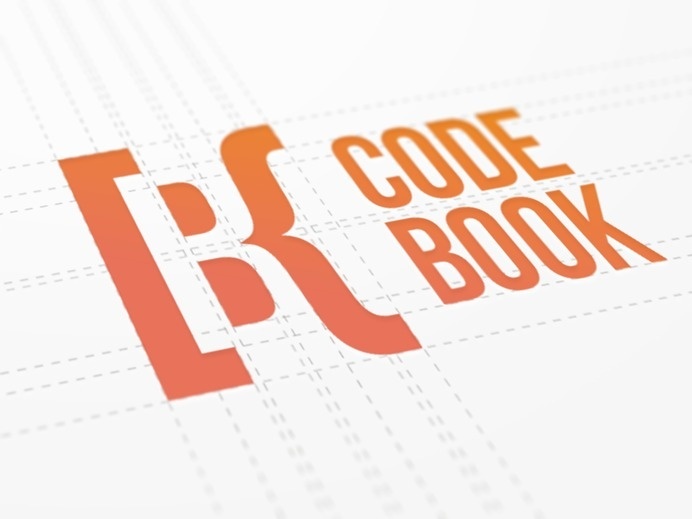
Logo Design - Negative Shapes by http://ramotion.com #logotype #dribbble #branding #iconography #negative #ramotion #design #code #book #shapes #brand #behance #identity #shape #photoshop #logo
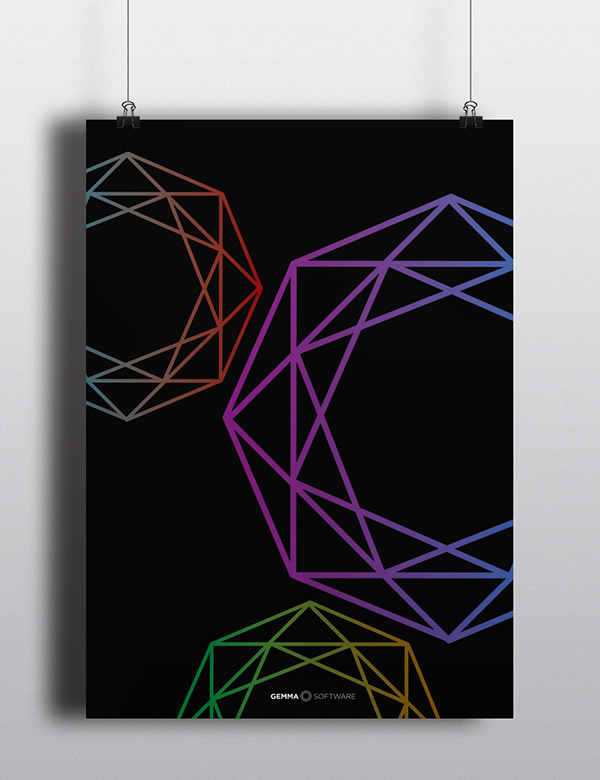
Gemma Software on Behance #tech #shade #branding #packaging #diamond #design #software #book #jewel #corporate #gem #precious #identity #brand #poster #stationery #website #logo #italy #technology
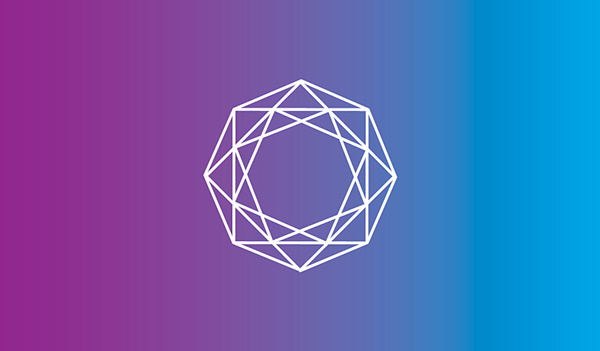
Gemma Software on Behance #tech #shade #branding #packaging #diamond #design #software #book #jewel #corporate #gem #precious #identity #brand #poster #stationery #website #logo #italy #technology
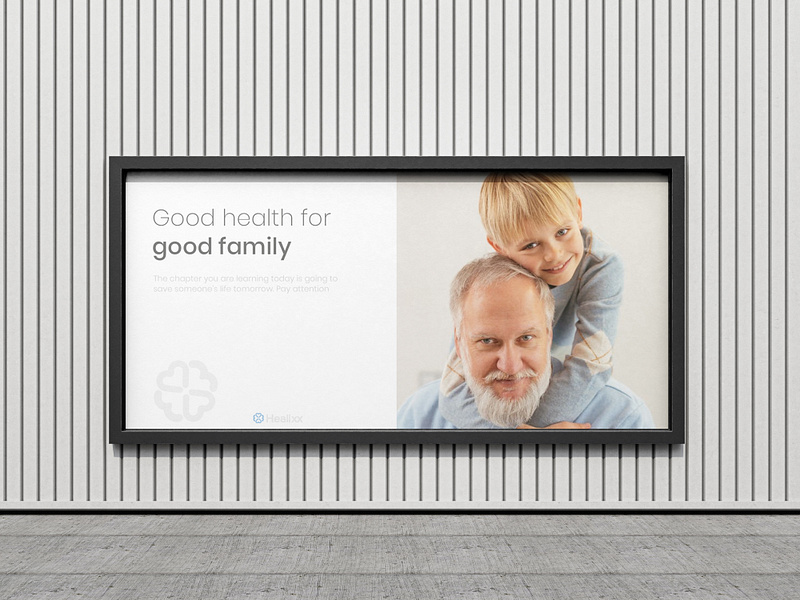
Healixx - Medical, Healthcare Branding Identity and Brand Book
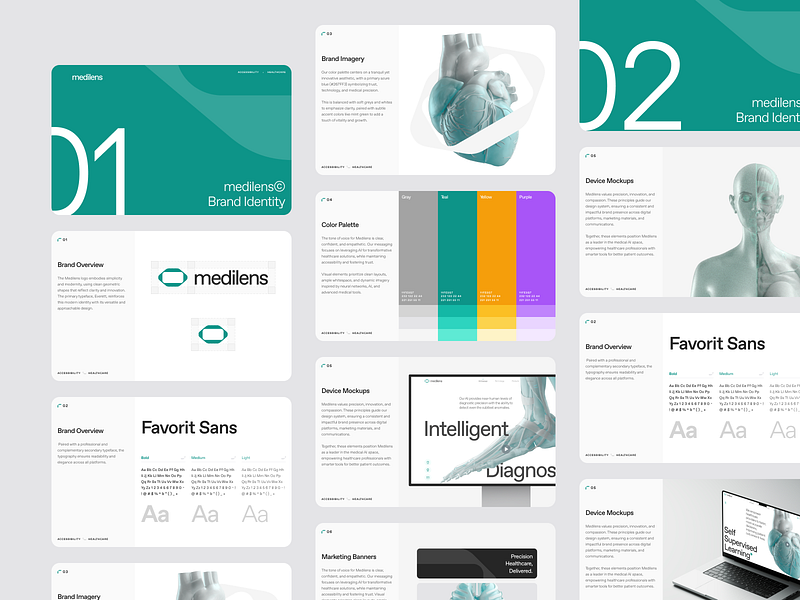
medilens: AI Medical Diagnostics & Imaging - Brand Book Identity
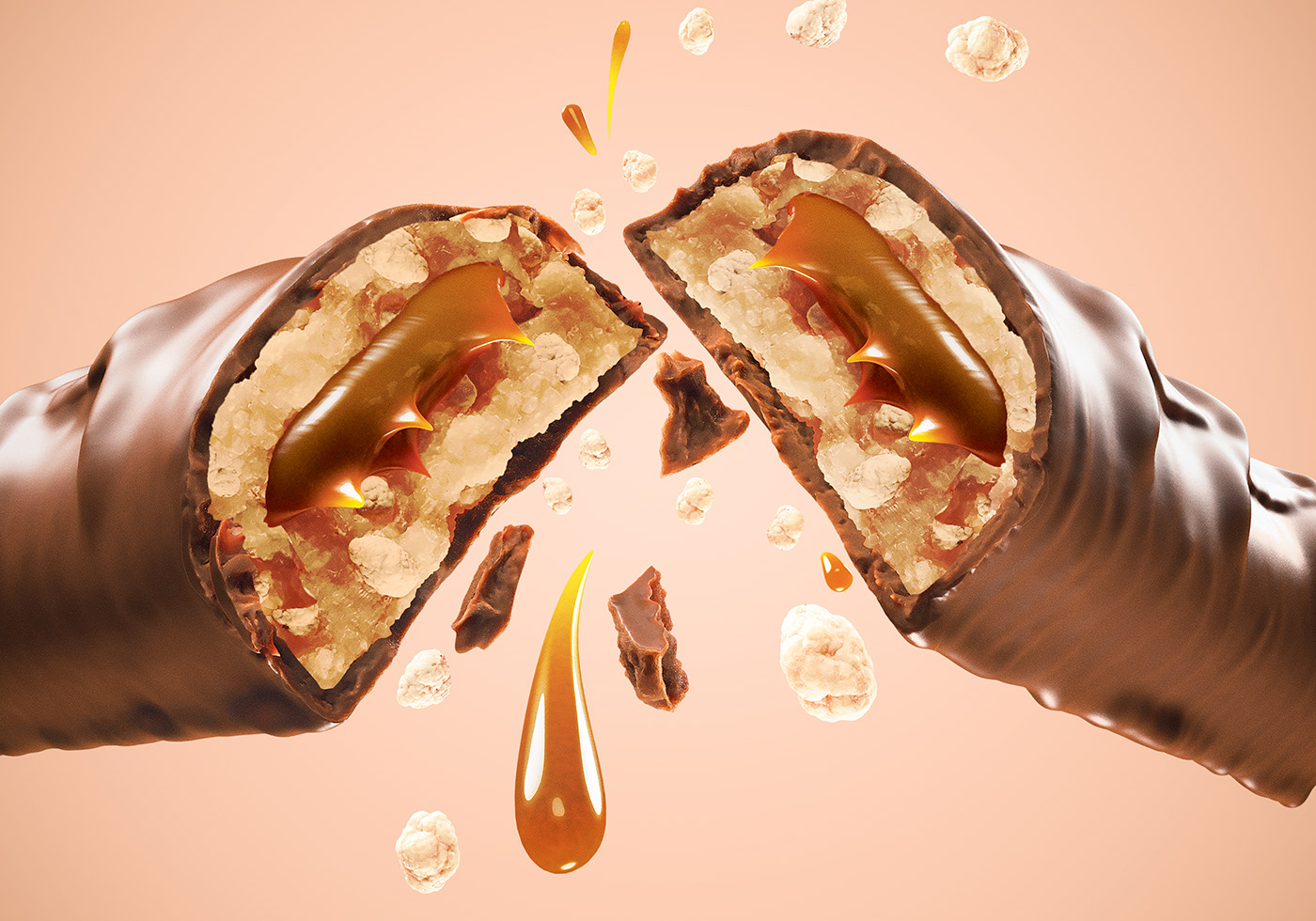
Fast | Visual Brand Identity
Visual Design work for Fast Sports Nutrition Brand. designer, graphic, graphic design, color, colour, inspiration, logo, logofolio, branding, branding agency, packaging design, brand identity, stationery, packaging, graphics, behance, dribbble, photography, art, typography, prints, digital art, trendy, skill share, skill share class, adobe, adobe photoshop, mood, art direction, istanbul, london, paris, new york, los angeles, san fransisco, idenity, custom, monogram, design studio, letterpress, brand, brand design, visual identity, corporate, corporate identity, ux, ui, interface, animation, user interface, user experience, startup, start up, minimal, creative, minimalism, simple, negative space, label, fashion, business, badge, illustration, icon, icons, drawing, sketch, freelance, freelancer, logotype, marketing, black and white, designers, website, web, work, web designer, brandbook, brand book, brand manual, catalog, business card, stationery, flyer, clean, basic, guideline,

Reviewed: New Logo and Identity for The Book People by The Clearing
“My Kind of People” Established in 1988, The Book People is an online and mail-order independent retailer of books in the UK. Starting with a single van selling books to businesses in the Guildford, Surrey, UK, area, the company soon had 140 vans and later expanded its reach through mail-order catalog before launching its online store in the late 1990s and continues its delivery-only operations without any brick and mortar retail stores. Recently, The Book People introduced a new identity designed by London, UK-based The Clearing. The Book People had to take on the might of Amazon. Only Amazon sell more books in the UK, and this rebrand brings The Book People's undisputed love of books right to the front of the business.For too long they had been trying to play Amazon at its own game; competing on price, convenience and range of titles. But over time the brand had become focused on deals and promotions, at the expense of building any emotional differentiation. Without a set of ownable assets, they were unable to distinguish themselves from other online retailers. They needed to focus on their mission, 'To inspire a lifelong love of reading'.The Clearing project page Samples of OLD identity. Formed from a stack of well loved books, which can be rearranged, picked up, and knocked over, signalling that books are there to be handled, passed on and loved! The flexibility and movement the logo has a playful personality.We've given them a single-minded approach to colour, leading with a bright and playful red, punctuated with white and black to create a brand with real standout. Supporting this is a palette of pastels which can carry any book cover design.The Clearing provided text Logo. Logo animation. The old logo was as basic as it gets, with a straightforward sans serif in a bold and light combination. It was red. I know I am just describing what you are all clearly seeing on your own but I'm doing so because there is nothing else to say about it. The new logo, on the other hand, is such a great expression of the joy of having books around: they are there. Piled, stacked, lined-up, scattered, and aplenty. With one book for each word of the name, the logo can be used in a few different combinations to fit its use with the primary being the horizontal version where the name reads perfectly as the books topple over. At first I wasn't convinced of "Book" being capitalized (vs. being uppercase) but it works well to highlight the important part of the name as well as to look like different book spines -- which makes me wonder if they tried a version of the logo where each word was a completely different style but I can also see how that could create readability issues. Anyway, I love this logo and how simple yet playful it is. Logo with character. We worked with illustrator Mr Griff to create a playful gang of characters, packed with personality who clutch, climb up or jump over their trusty books to share this love of reading. These guys reflect the enthusiasm and excitement people have for books, the stories they contain, the imaginary worlds you get visit, or to educate and inspire.The Clearing provided text Character illustrations by Mr Griff. Other illustrations. The logo and the identity are accompanied by a great range of illustrations in a style that is not the faceless tech drones and the Brand New world rejoices. I love the style, the expressions, and the way they have integrated the books (always in red covers to match the logo). If there was one concern is that they can skew very young, making it seem like The Book People mostly sells children's books so maybe a few more drawings like the tie-wearing guy with the dinosaur screaming at him would help. Still, these are joyful. We have crafted a bespoke typeface called Book People Pen with Paula Diloka and Luke Prowse. The use of a handwritten font instills a real sense of personality across the brand, for use on everything from printed catalogues, social posts, to their heavy hitting E-commerce website.The Clearing provided text Messaging. The handwritten fun is nice, playful, and a good complement to the illustrations but in dire need of alternate characters and some OpenType magic to take it to the next level. Website. Catalog. Card and tote. Traveling bus. Not a whole lot in terms of applications but from the few prototypes (and the live website) it's easy to see what a huge improvement this is from what existed before. From the logo to the illustrations to the handwritten font this all exudes excitement for books in a way that Amazon, in all its money-saving glory, has never been able to do.
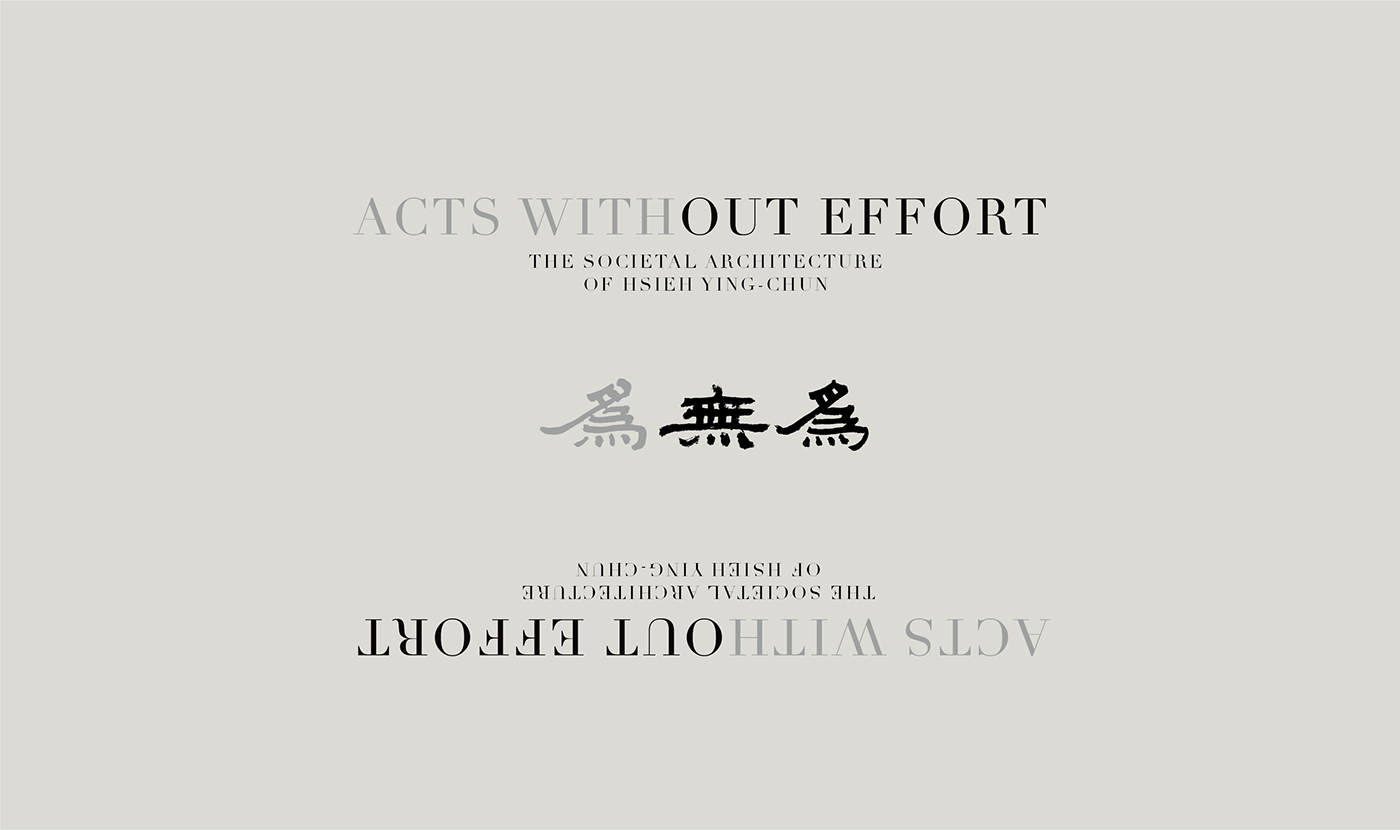
Acts Without Effort- The Societal Architecture of Hsieh
design, designer, graphic, graphic design, color, colour, inspiration, logo, logofolio, branding, branding agency, packaging design, brand identity, stationery, packaging, graphics, behance, dribbble, photography, art, typography, prints, digital art, trendy, skill share, skill share class, adobe, adobe photoshop, mood, art direction, istanbul, london, paris, new york, los angeles, san fransisco, idenity, custom, monogram, design studio, letterpress, brand, brand design, visual identity, corporate, corporate identity, ux, ui, interface, animation, user interface, user experience, startup, start up, minimal, creative, minimalism, simple, negative space, label, fashion, business, badge, illustration, icon, icons, drawing, sketch, freelance, freelancer, logotype, marketing, black and white, designers, website, web, work, web designer, brandbook, brand book, brand manual, catalog, business card, stationery, flyer, clean, basic, guideline, rebranding, re-branding, letterhead, foil, emboss,
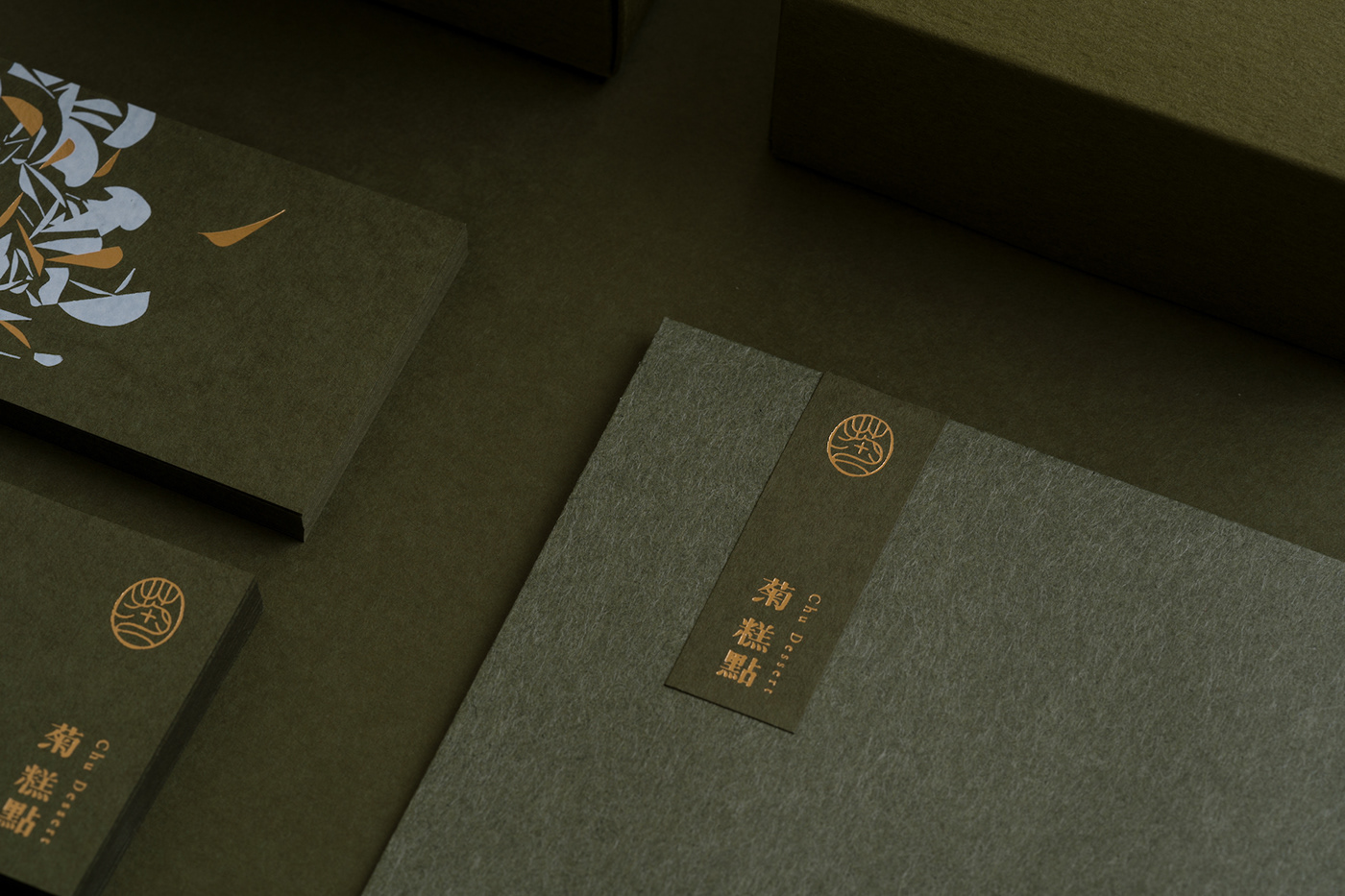
Chu Dessert Branding & Strategy
design, designer, graphic, graphic design, color, colour, inspiration, logo, logofolio, branding, branding agency, packaging design, brand identity, stationery, packaging, graphics, behance, dribbble, photography, art, typography, prints, digital art, trendy, skill share, skill share class, adobe, adobe photoshop, mood, art direction, istanbul, london, paris, new york, los angeles, san fransisco, idenity, custom, monogram, design studio, letterpress, brand, brand design, visual identity, corporate, corporate identity, ux, ui, interface, animation, user interface, user experience, startup, start up, minimal, creative, minimalism, simple, negative space, label, fashion, business, badge, illustration, icon, icons, drawing, sketch, freelance, freelancer, logotype, marketing, black and white, designers, website, web, work, web designer, brandbook, brand book, brand manual, catalog, business card, stationery, flyer, clean, basic, guideline, rebranding, re-branding, letterhead, foil, emboss,

Rhea Hair Tonic Brand Identity Book
This work is for my school project. It's call Rhea Hair Tonic. Rhea is the mother of God on Greek mythology
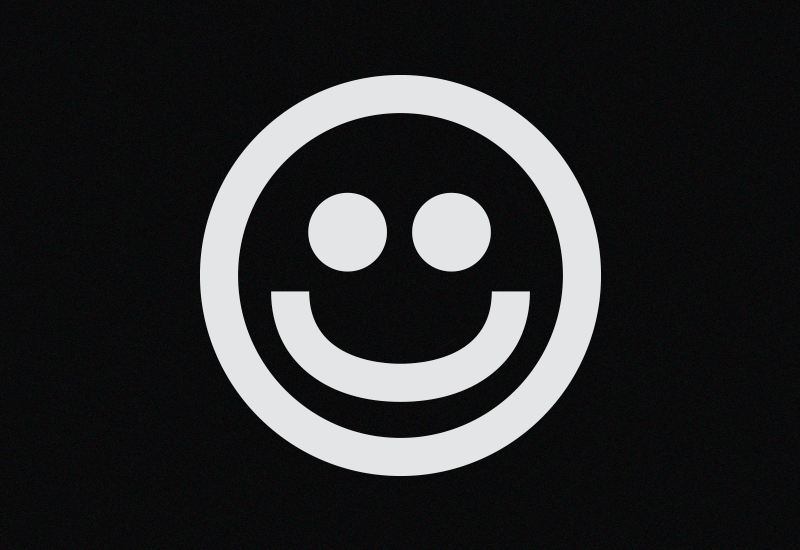
Quinto/B™
Logotypes & Marks -- Tags design, designer, graphic, graphic design, color, colour, inspiration, logo, logofolio, branding, branding agency, packaging design, brand identity, stationery, packaging, graphics, behance, dribbble, photography, art, typography, prints, digital art, trendy, skill share, skill share class, adobe, adobe photoshop, mood, art direction, istanbul, london, paris, new york, los angeles, san fransisco, idenity, custom, monogram, design studio, letterpress, brand, brand design, visual identity, corporate, corporate identity, ux, ui, interface, animation, user interface, user experience, startup, start up, minimal, creative, minimalism, simple, negative space, label, fashion, business, badge, illustration, icon, icons, drawing, sketch, freelance, freelancer, logotype, marketing, black and white, designers, website, web, work, web designer, brandbook, brand book, brand manual, catalog, business card, stationery, flyer, clean, basic, guideline, rebranding

Pompeii Branding
Re-styling of Pompeii Brand. Made as Ux/Ui designer in Pompeii. Just a proposal. All the images belong to their owners. Tags: design, designer, graphic, graphic design, color, colour, inspiration, logo, logofolio, branding, packaging design, brand identity, stationery, packaging, graphics, behance, dribbble, photography, art, typography, prints, digital art, trendy, skill share, skill share class, adobe, adobe photoshop, mood, art direction, idenity, custom, design studio, brand, brand design, visual identity, corporate, corporate identity, minimal, creative, minimalism, simple, negative space, label, fashion, business, badge, illustration, icon, icons, drawing, sketch, freelance, freelancer, logotype black and white, designers, brandbook, brand book, brand manual, catalog, clean, basic, guideline, rebranding, modern, contemporary, luxury, simplicity, concept, firm, font, typeface, type, brandmark, collection, geometry, texture, patterns, mark, bold, bright, grid, shape, one page, typographical logo, minimal logo, modern branding, unique, minimal identity, creative logos, good, logo inspiration, best european design, best logo, best logotype, typo, lettering, sneakers, sneaker shop, start up,
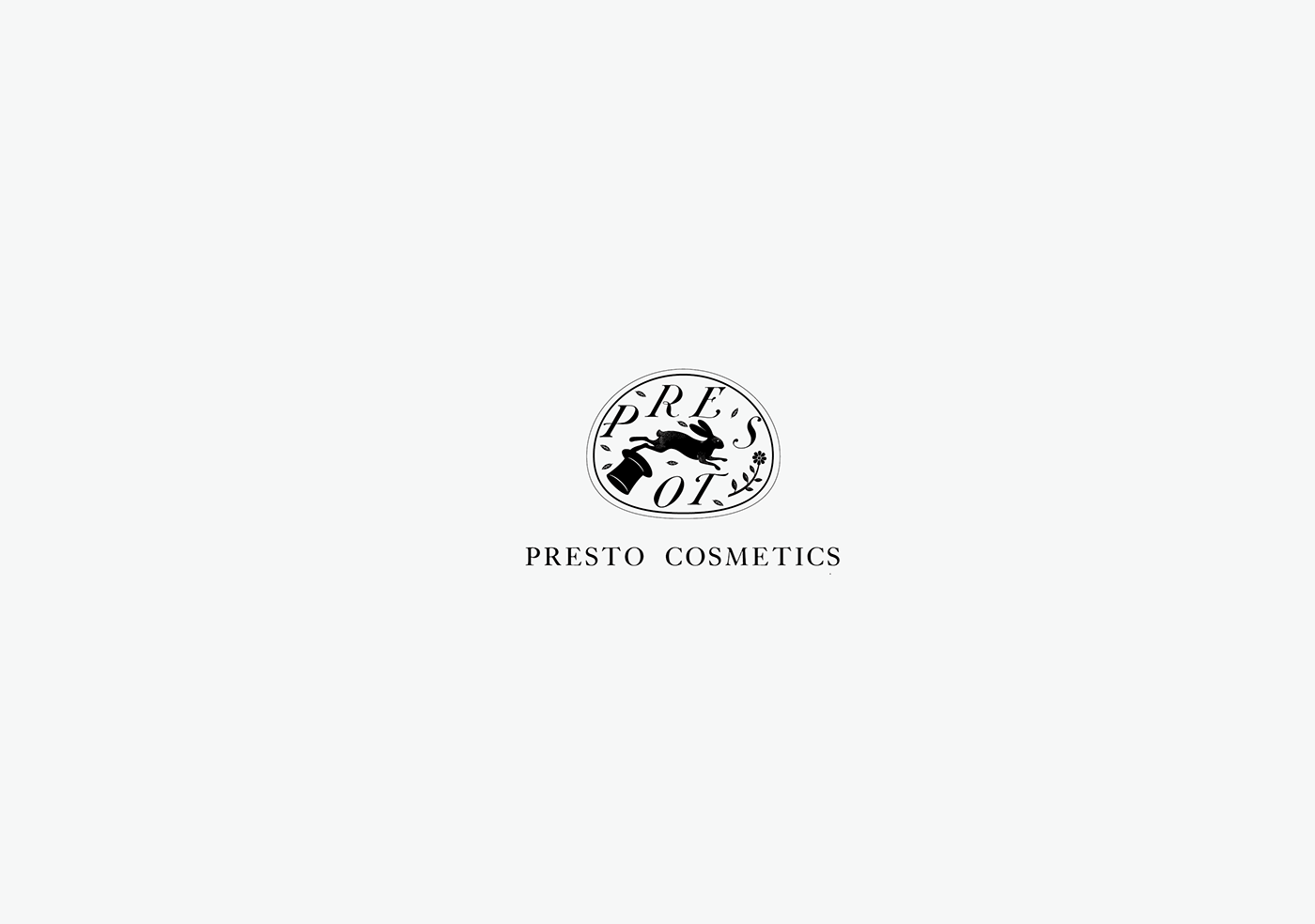
Presto Cosmetics
design, designer, graphic, graphic design, color, colour, inspiration, logo, logofolio, branding, branding agency, packaging design, brand identity, stationery, packaging, graphics, behance, dribbble, photography, art, typography, prints, digital art, trendy, skill share, skill share class, adobe, adobe photoshop, mood, art direction, istanbul, london, paris, new york, los angeles, san fransisco, idenity, custom, monogram, design studio, letterpress, brand, brand design, visual identity, corporate, corporate identity, ux, ui, interface, animation, user interface, user experience, startup, start up, minimal, creative, minimalism, simple, negative space, label, fashion, business, badge, illustration, icon, icons, drawing, sketch, freelance, freelancer, logotype, marketing, black and white, designers, website, web, work, web designer, brandbook, brand book, brand manual, catalog, business card, stationery, flyer, clean, basic, guideline, rebranding, re-branding, letterhead, foil

Linked: vitaminwater Brand Book
Visit Link Pretty epic brand book -- part history, part strategy, and part guidelines -- that showcases the identity work by Collins for vitaminwater in collaboration with their creative team.
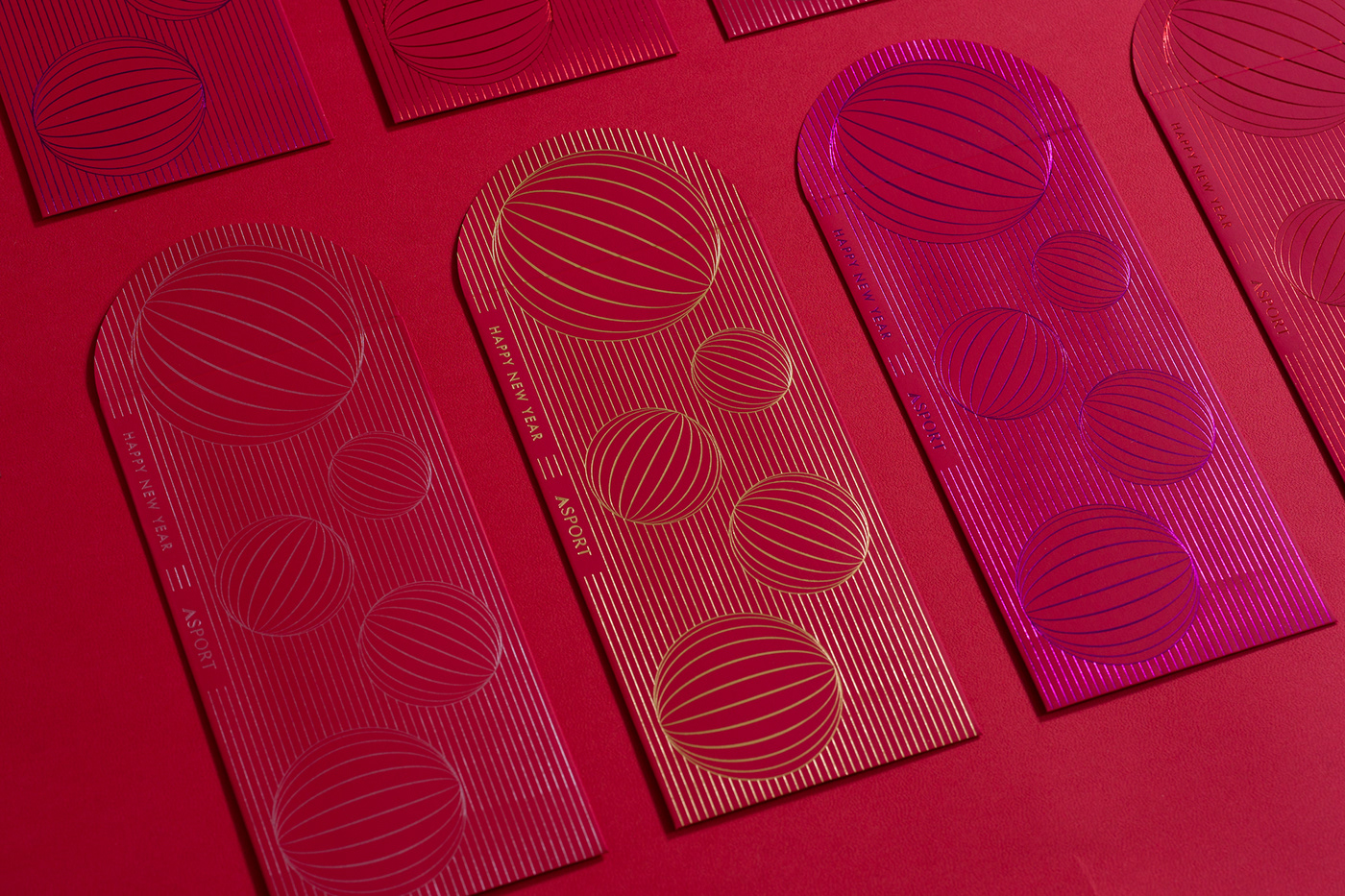
ASPORT Red Envelope
design, designer, graphic, graphic design, color, colour, inspiration, logo, logofolio, branding, branding agency, packaging design, brand identity, stationery, packaging, graphics, behance, dribbble, photography, art, typography, prints, digital art, trendy, skill share, skill share class, adobe, adobe photoshop, mood, art direction, istanbul, london, paris, new york, los angeles, san fransisco, idenity, custom, monogram, design studio, letterpress, brand, brand design, visual identity, corporate, corporate identity, ux, ui, interface, animation, user interface, user experience, startup, start up, minimal, creative, minimalism, simple, negative space, label, fashion, business, badge, illustration, icon, icons, drawing, sketch, freelance, freelancer, logotype, marketing, black and white, designers, website, web, work, web designer, brandbook, brand book, brand manual, catalog, business card, stationery, flyer, clean, basic, guideline, rebranding, re-branding, letterhead, foil, emboss

LOGOFOLIO - BAD LOGOS 2
LOGOFOLİO - BAD LOGOS 2 Logotypes & Marks -- Tags design, designer, graphic, graphic design, color, colour, inspiration, logo, logofolio, branding, branding agency, brand, brand identity, stationery, packaging, graphics, behance, dribbble, photography, art, typography, prints, digital art, trendy, skill share, skill share class, adobe, adobe photoshop, mood, art direction, istanbul, london, paris, new york, los angeles, san fransisco, idenity, custom, monogram, design studio, letterpress, brand, brand design, visual identity, corporate, corporate identity, ux, ui, interface, animation, user interface, user experience, startup, start up, minimal, creative, minimalism, simple, negative space, label, fashion, business, badge, illustration, icon, icons, drawing, sketch, freelance, freelancer, logotype, marketing, black and white, designers, website, web, work, web designer, brandbook, brand book, brand manual, catalog, business card, stationery, flyer, clean, basic, guideline
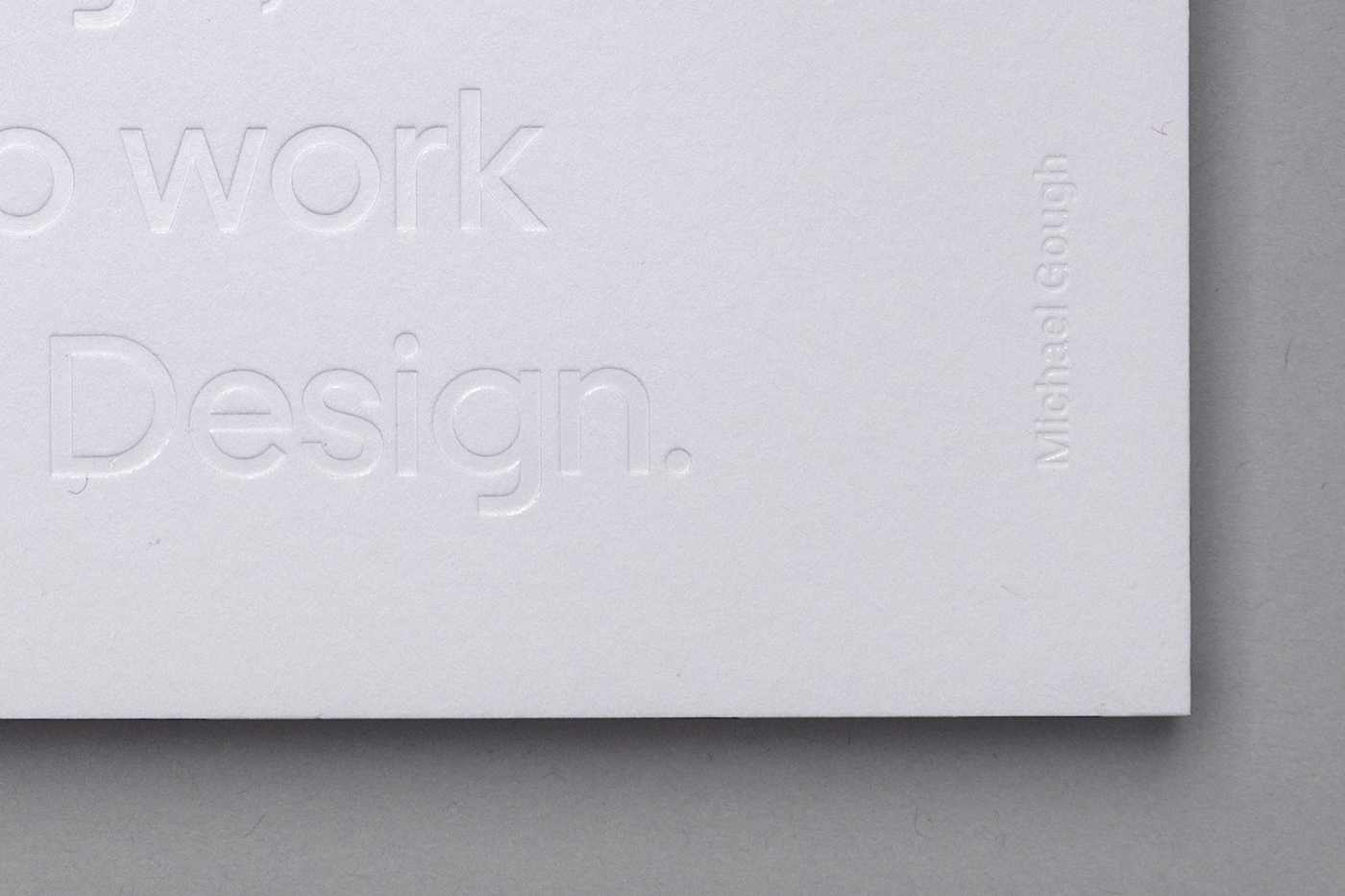
Uber - 77 Things
In 2018, Uber launched its new brand positioning along with a complete new visualidentity system. On this ocasion Michael Gough, Uber's head of Design, wrote the book 77 Things. A book with 77 design principles for those who work with Uber Design and those who want to work with Uber design. This book has become an opportunity to explore the boundaries of Uber's new visual identity system, and especially create examples of how to use the entire typographic family created especially for Uber. The Book The design of the book was inspired directly by its content. We set a pattern, we create rules, and we reproduce them throughout the book. " 77th: Design for Pattern Pattern recognition is an essential skill for creators. See the patterns in user behavior, and how to change them. Understand the implicit patterns of use, layout, and function in your work. Then, make them explicit." 77 Things, Michael Gough
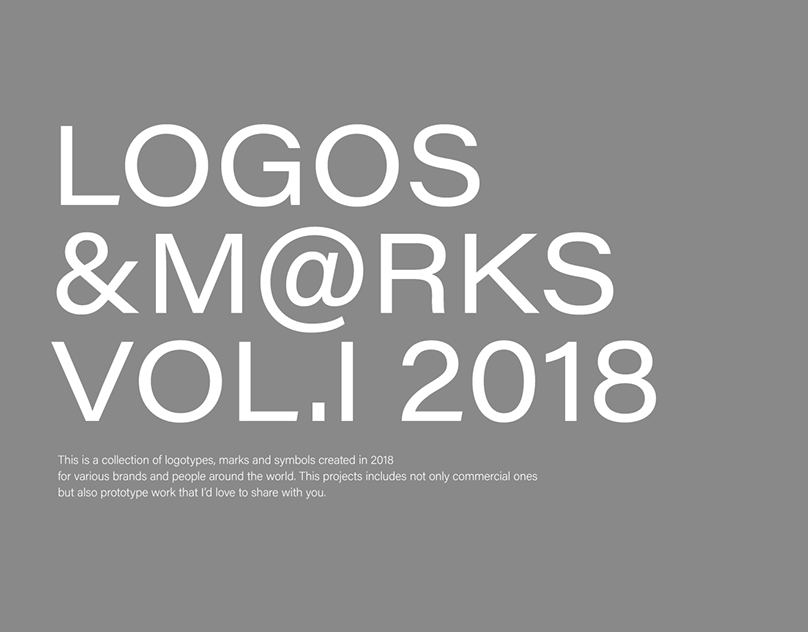
FİRSTFOLİO - BAD LOGOS
FİRSTFOLİO - BAD LOGOS Logotypes & Marks -- Tags design, designer, graphic, graphic design, color, colour, inspiration, logo, logofolio, branding, branding agency, packaging design, brand identity, stationery, packaging, graphics, behance, dribbble, photography, art, typography, prints, digital art, trendy, skill share, skill share class, adobe, adobe photoshop, mood, art direction, istanbul, london, paris, new york, los angeles, san fransisco, idenity, custom, monogram, design studio, letterpress, brand, brand design, visual identity, corporate, corporate identity, ux, ui, interface, animation, user interface, user experience, startup, start up, minimal, creative, minimalism, simple, negative space, label, fashion, business, badge, illustration, icon, icons, drawing, sketch, freelance, freelancer, logotype, marketing, black and white, designers, website, web, work, web designer, brandbook, brand book, brand manual, catalog, business card, stationery, flyer, clean, basic, guideline, r

Reviewed: New Logo and Identity for One Medical by Moniker and In-house
“Connect the Dots” Established in 2007, One Medical is an independent, premium, primary care provider in the U.S.. What that means is that instead of going to your usual doctor's office that typically looks like you are going to leave more sick than when you first came in and that operates more like a FedEx dispatch facility than a place where people are cared for, you go to shiny pretty offices, you can properly book appointments online and in an app, and you get quality care. Becoming a patient with them requires an additional membership fee on top of the health insurance you are already paying for but in return they "offer you the innovative digital health tools and value-added services that make One Medical unique." One Medical has 60 locations in eight major cities, expanding to a ninth one in 2019, and has taken this opportunity to introduce a new identity designed by San Francisco, CA-based Moniker in collaboration with their in-house team. Moniker worked collaboratively with the internal design team to rebuild One Medical's identity system from the ground up. We began with an extensive brand audit and competitive analysis, identifying key equities in the existing identity and opportunities for expansion. Each element of the identity was then aligned with the company's focus of delivering people-centered care.The result is a sophisticated brand that is equally premium and human. A refined logotype, simplified color palette, and expressive typographic system laid the foundation of the brand, while intimate photography of real people and hand-drawn illustrations brought a personal touch to expand the visual system. A comprehensive set of guidelines provided a flexible foundation for the brand to evolve with the company as they expand into new markets and services.Moniker provided text Logo. The old logo was already fairly good and had established a more premium feel than most doctor practices, resembling a healthcare insurance company more than an on-the-ground group of doctors. The wordmark was nice and the icon was (and still is) ambiguous but decent -- its color palette was the one thing that felt cheap. The new logo is a beautiful evolution, making it better in every aspect, starting with the size relationship of the icon to the wordmark, which makes the icon feel more elegant and dignified, like it doesn't need to shout anymore. Based on Ginto by Dinamo -- with whom Moniker collaborated on the development of the logo -- the wordmark now feels much more unique and even luxurious, which is aided by the lush dark green color. It's such a great progression to the logo... it reminds me, in philosophy, of the Lufthansa redesign. Business cards. Look at those business cards. So nice. Photography. By Michael O'Neal. Brochures. The identity introduces a perfectly conceived and art directed set of photographs with a beautiful range of colors and that literally add a human touch without feeling cliché, cloying, or cheesy. These integrate seamlessly with the dark green brand color, the logo, the icon on its own, and the supporting serif, Grilli Type's GT Super, which was subtly customized for this job. This is the only element that I'm not 100% convinced by and it's because, at times, the display version of GT Super overpowers the other elements as it's a typeface that demands a lot of attention -- the text version is a little less dramatic. Still, this is all really nice. Magazine. Ads. Posters. Notebook. Illustrations. By Charlotte Trounce. Brochure with illustrations. The identity also uses illustration and the plan is to use different illustrators over the years as opposed to building a single library for the rest of eternity. For now, this set by Charlotte Trounce is great, avoiding the trendy, mono-thickness, flat approach and instead introducing something that's warm, fuzzy, and has all the feels. The color palette is in tune with the photography and, in the same way, works seamlessly with the dark green and the rest of the elements. Ad with illustrations. Website. By Instrument. Various applications. Overall, this is tremendous redesign that better supports the premium offering of the company and makes it feel like it's worth the investment and make those co-pays a little more bearable. A little.

Reviewed: New Logo and Identity for Alexandra Palace by Lovers
“Archery” Opened in 1873, Alexandra Palace (Ally Pally to friends) is a culture, sports, and entertainment venue in London, UK, hosting exhibitions, conferences, festivals, corporate events, and more. An Act of Parliament in 1936 established that Alexandra Park and Palace would have to be made available for the free use and recreation of the public forever regardless of who the trustee in charge was. Located in a 196-acre estate, Ally Pally offers eight different rooms and halls within the palace that can accommodate more than 10,000 people. The palace has been host to major events from its inauguration in the late 1800s to serving as a refugee camp in WWI to hosting the world's first regular high-definition public television broadcast that took place from the BBC studios that were then housed at the Palace. Needless to say, a lot of history has played out here. Recently, coinciding with the planned renovation of its East Court and Victorian theatre, Alexandra Palace is introducing a new identity designed by London-based Lovers. (The identity is not live online yet but has been implemented on site.) Ally Pally (as it's fondly known to Londoners) has been a multi-recreational Mecca since 1875. But without a coherent brand identity to champion its historic and contemporary significance, the palace's efforts were feeling fragmented. Lovers stepped in to help the brand reclaim its cherished place in the hearts of audiences.No London cultural centre contains as much eclecticism as Ally Pally; music stages, sporting arenas, skate park, theatre, boating lake and 196 acres of parkland. Our 'pleasure dome simplicity' logo seeks to put a lid on it all, along with a colour palette that celebrates breadth.Lovers project page Logo. The old logo looked elegant but that was about it, unless we want to unpack the swash in the "A" which was a little stiff and not very useful. The new logo is a direct reference to the iconic arches of Ally Pally's Great Hall. The length of "ALEXANDRA" lends itself quite well to the arch treatment -- especially with book-ending "A"s at the start and end -- and works nicely over "PALACE". Unlike other arch or type-on-a-curve wordmarks that typically look cool but without a particular reason, this one looks cool and AND is warranted. Typeset in Ganby, the arch logo serves as the more serious hinge of the identity. Business cards. Letterhead. "AP" monogram references. Complementing the wordmark is an "AP" monogram that can be found physically in certain details of the Palace and provides a charming antique ornament that speaks to the history of the venue. Used large or small, it's a quirky and peculiar device that provides a striking contrast to the main logo. Monogram totes. Notebook. Custom font. To complement the wordmark AND the monogram is a custom font that's sort of a cross between the serif in the old logo and carnival typography, yielding a very, VERY unique typeface with a lot of personality. It's hard to hate it because it's having so much fun just existing. It's a very unexpected identity element but I like how it's evocative of the architectural excess of the venue and serves as a way to convey the joy and diversity of the many events that take place here. "I AP Ally Pally" applications. Ally Pally's new brand voice channels a colourful cast of characters from its past and present, borrowing vocal techniques from BBC pioneers, Victorian daredevils and other dreamers. We jotted the recipes in a pocket book for easy reference by the palace's brand team.Lovers project page Brand voice book. Ad. Banner ad. Pencils. Coaster. Exhibit area. Banner. It's a little hard to judge the actual application as, so far, there isn't an evident system that comes through in the images shown. Yes, there is the display typeface and Granby but it's kind of hard to connect the "Whatever Next?" banner with the coaster with the image directly above. But maybe that's the point... providing these ingredients that can be mixed and matched as necessary depending on the subject matter. Signage. The examples of the signage and wayfinding look great, mixing Granby with some ornate icons. The grate-like applications are excellent, adding to the already rich textures of the building. Overall, without knowing what the old identity used to look like (but I imagine wasn't much to look at), this is a great update that manages to feel buttoned up, which is something you want as an event manager, as well as loads of fun, which is what you want as a patron.
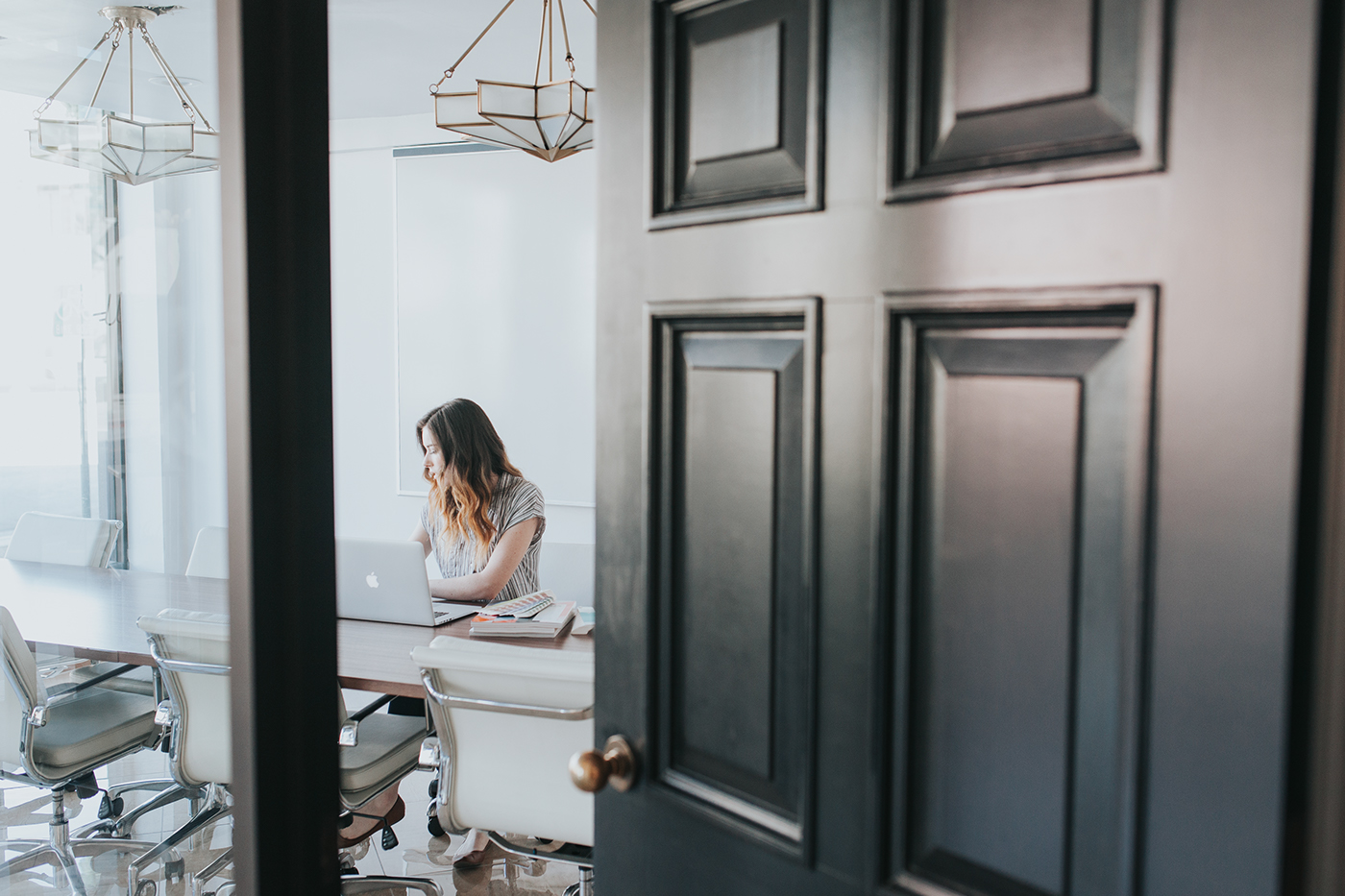
Pre-lance | Branding
Pre-lance™ is a 6 week online course that walks recent graphic design graduates through the steps it takes to succeed at freelancing. The logo is based on Helvetica, the one font that most all college graduates can identify upon graduating. The split between "Pre" and "lance" depicts where the designer is now and where they will be after taking the course. Pre-lance bridges the gap between what was taught in design school and what is needed to earn money as a freelancer. //Project tags: design, designer, graphic, graphic design, color, inspiration, logo, logofolio, branding, branding agency, packaging design, brand identity, stationery, packaging, graphics, behance, dribbble, photography, art, typography, prints, digital art, trendy, skill share, skill share class, adobe, adobe photoshop, mood, art direction, orange county, california, new york, los angeles, san fransisco, identity, custom, monogram, design studio, letterpress, brand, brand design, visual identity, corporate, corporate identity, user experience, startup, start up, minimal, creative, minimalism, simple, negative space, label, fashion, business, badge, illustration, icon, icons, drawing, sketch, freelance, freelancer, logotype, marketing, black and white, designers, work, web designer, brand book, look book, brand standards, brand manual, catalog, business card, stationery, flyer, clean, basic, guideline, rebranding, re-branding, letterhead, foil, emboss, landing page, set styling, editorial and publications, interior, stamps, modern, contemporary, luxury, simplicity, concept, firm, award, awarded, sustainability, indoor, outdoor, advertising, presentation, visualisation, architecture, interiors, interior design, client, web designer, graphic designer, font, typeface, type, brandmark, collection, geometry, texture, patterns, mark, bold, bright, grid, shape, brochure, catalogue, photography, one page, typographical logo, minimal logo, modern branding, unique, minimal identity, creative logos, good, logo inspiration, best design, best logo, best logotype, typo, lettering, co-working, CSUF, costa mesa, fullerton, orange, anaheim, santa monica, hollywood, e-course, online, digital marketing, the futur.
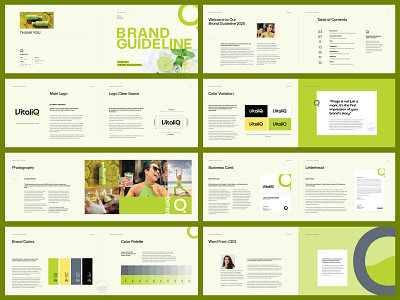
VitaliQ - Logo design - Brand book - Brand identity - Print
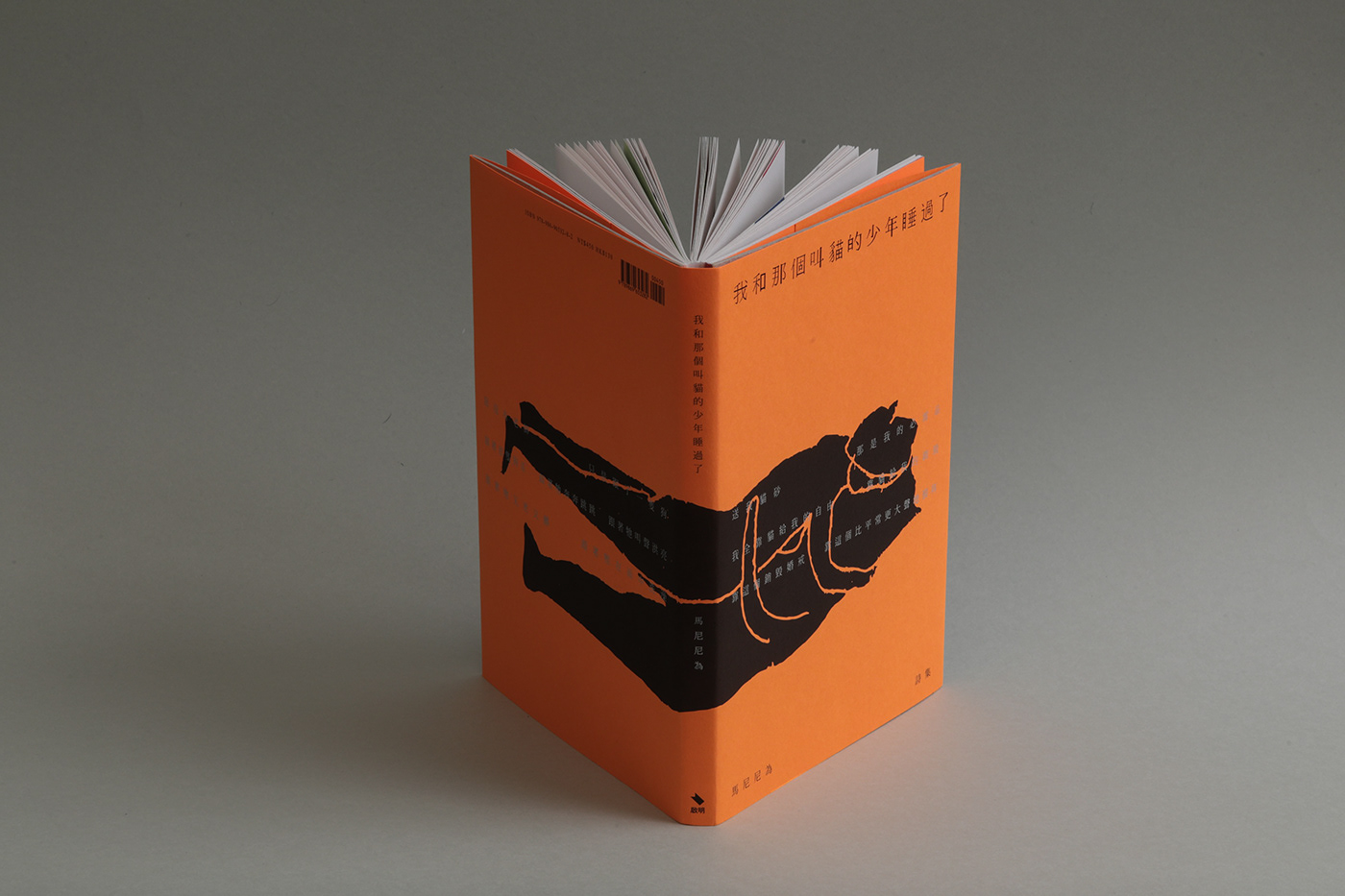
Poem Book - I have slept with my cat
Project Tags: design, designer, graphic, graphic design, color, colour, inspiration, logo, logofolio, branding, branding agency, packaging design, brand identity, stationery, packaging, graphics, behance, dribbble, photography, art, typography, prints, digital art, trendy, skill share, skill share class, adobe, adobe photoshop, mood, art direction, istanbul, london, paris, new york, los angeles, san fransisco, idenity, custom, monogram, design studio, letterpress, brand, brand design, visual identity, corporate, corporate identity, ux, ui, interface, animation, user interface, user experience, startup, start up, minimal, creative, minimalism, simple, negative space, label, fashion, business, badge, illustration, icon, icons, drawing, sketch, freelance, freelancer, logotype, marketing, black and white, designers, website, web, work, web designer, brandbook, brand book, brand manual, catalog, business card, stationery, flyer, clean, basic, guideline, rebranding, re-branding, letterhead,
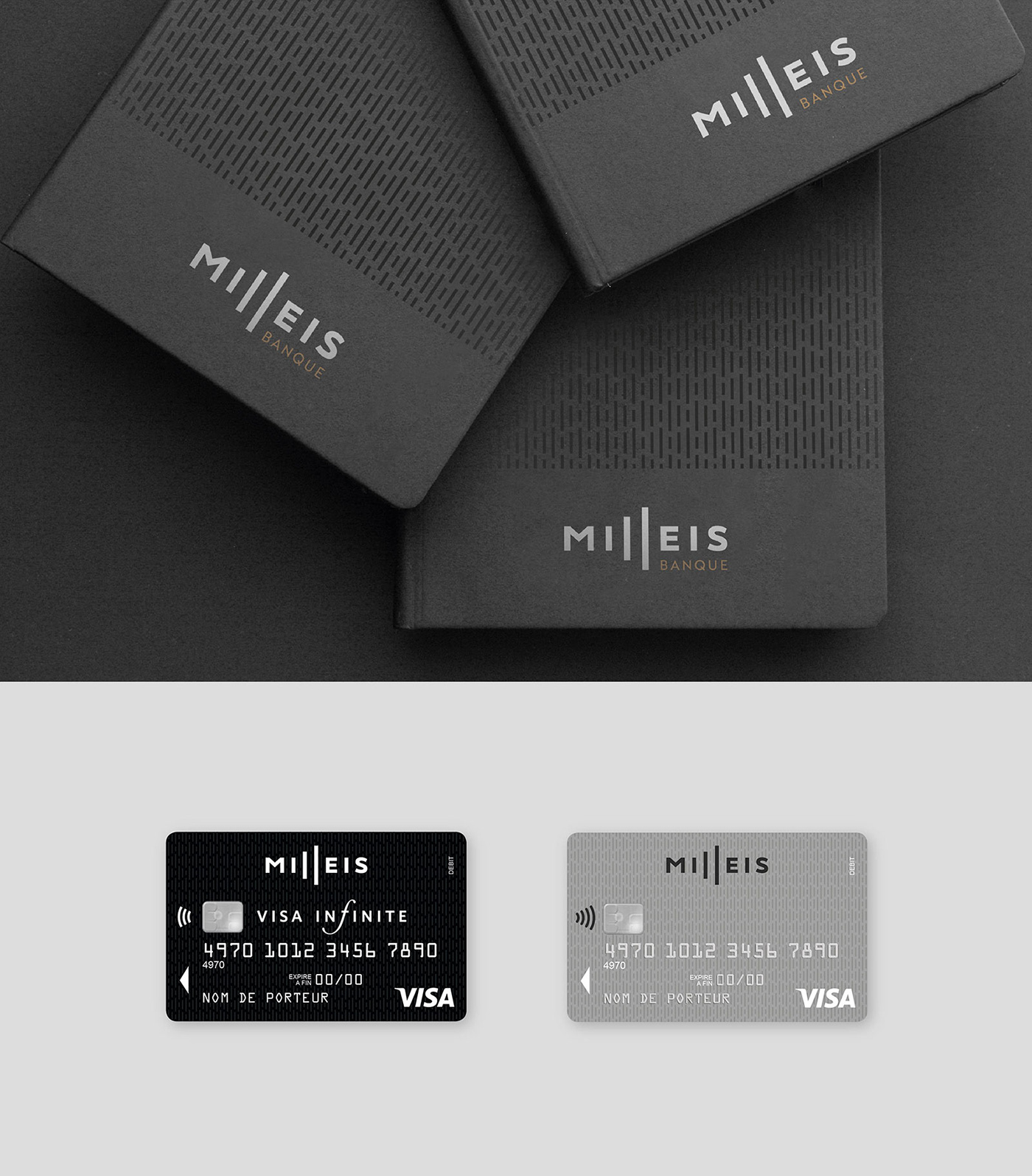
Milleis Banque, Global Branding
Barclays France becomes Milleis Banque and changes its branding with Carré Noir. Work includes brand strategy and positioning, brand identity, brand book and guidelines, digital expression, iconography and retail design.
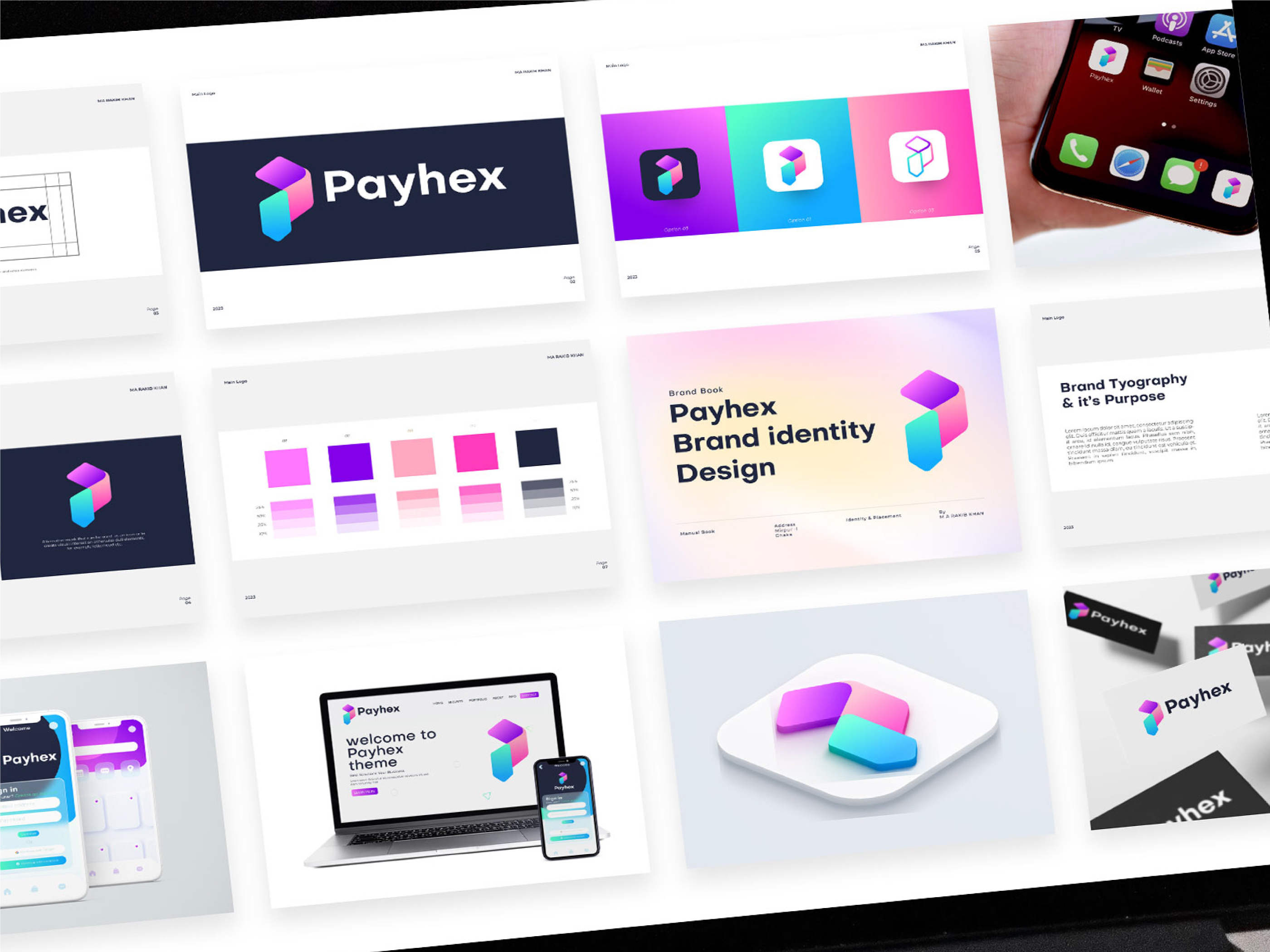
Payhex Brand Identity design, Brand Book, Branding, logo

Noted: New Logo and Identity for Destination Canada by Cossette
“I Heart Canada” "Destination Canada (formerly Canadian Tourism Commission) is Canada's national tourism marketing organization. A federal Crown Corporation, we lead the Canadian tourism industry, alongside federal and provincial governments and private-sector partners, in marketing Canada around the world. We passionately believe that Canada is a place where travellers can create their own unique and extraordinary personal experiences. Canada's stunning natural scenery, its vibrant cities, its geography built for memorable personal journeys and, above all, its people, are building blocks in great travel stories." Design by Cossette Related links Destination Canada press releaseStrategy News story Relevant quoteDestination Canada, the national tourism marketing agency, has tapped into what it means to be Canadian and evolved its brand to inspire even more international travellers to visit Canada.The tagline For Glowing Hearts, which was inspired by the national anthem, and a distinctive heart-shaped logo, rooted in the country’s bold red and white iconography, are elements of an evolved brand architecture designed to create a strong emotional connections with travellers. Images (opinion after) Logo. Guidelines. Spreads from brand booklet. Sort of ignore the red band, which I am guessing looks cool on the actual printed book, running within the gutter of the book. Destination Canada CEO David Goldstein with new sign. (Image source) Brand video. Opinion The old logo was not the most exciting thing in the world and looked too much like a boring part of the government instead of the cool, fun part of the government tasked with getting people excited about visiting Canada. Execution-wise, I guess it was fine. The new logo is certainly more visual and graphic with a large “CANADA” in the shape of a heart — an awkward, very wide heart, which, to be honest I didn't see initially. I kind of want to like its boldness and daringness but there is something unappealing about the way the letters have been modified to contort into a heart shape. It really is a valiant effort though, to do something off-kilter and expressive in an age of sameness so I have mostly positive feelings despite the relatively negative reaction to the letterforms. Obviously, no Canada logo is complete without a maple leaf and this one almost looks and works like a trademark symbol. Not much in application other than a brand booklet PDF you can download and look at the painful Separat type in action, which, yeah, is super weird. Overall, a bold and dramatic change into something much more guttural and evocative that opens the door to more engaging applications and messaging.

Reviewed: New Logo and Identity for Delta Gamma by Ologie
“Anchor Management” Established in 1873, Delta Gamma is one of the largest women fraternities* in the U.S. with more than 250,000 initiated members in 152 collegiate chapters and 195 alumnae groups. (* Delta Gamma refers to itself as a fraternity instead of a sorority.) Their Greek letters were chosen by the three young women who founded the fraternity in Oxford, Mississippi, at the Lewis School for Girls when they were unable to go home for the Christmas break, because of their desire to "Do Good", which remains their motto today. In 1951, the Delta Gamma Foundation, a nonprofit organization, was formed to support fundraising, scholarships, programming and grants and specifically to help the visually impaired and other organizations that promote sight preservation and conservation. This month, Delta Gamma introduced a new identity designed by Columbus, OH-based Ologie. The Delta Gamma identity represents us visually at the most basic level. It's a signature, a stamp of quality, and a symbol of pride for all of us to rally behind.The brand mark is a combination of elements that are unique to Delta Gamma. It represents timelessness and pride, and is deeply rooted in our fraternity's history.The wordmark is a distinctive graphic treatment of our name. It's usually positioned alongside the brand mark to create a recognizable logo for our brand.Delta Gamma Brand Guidelines Logo. Lock-up variations. Color variations. The first question that might come to mind, is why an anchor? It was adopted in 1877 as a symbol for hope. The second question that might come to mind, is why hope? It's one of the values of the fraternity and their original pin featured a letter "H". So... The old logo depicted the anchor in a rather mundane way, looking like a random marina or seafood restaurant and accompanied by painfully obvious fake small caps with the "D" and the "G" far too bold in contrast to the smaller uppercase letters. The new logo is a lovely and much needed evolution that not just adds sophistication but brings it into the academic world. The anchor is now more minimal and instead of the rope as a garnish it features the Greek letters filling in the counterspaces quite well and supported by a minimal rose graphic that follows the contour of the anchor. The wordmark is set in a very nice serif -- ID help, please -- that looks book-ish and contemporary. The year at the bottom is probably not needed but it does create a good balance with the anchor. Overall, the logo manages to feel feminine, strong, and confident without being heavy-handed about any of those aspects. Our color palette is bold and distinctive. It relies primarily on our heritage colors of blue and pink, along with generous white space. Secondary colors are used for deeper levels of content in layouts and for breaking up headlines. By leaning on our heritage colors and plenty of white space, we create a modern look that still connects with our tradition.Delta Gamma Brand Guidelines Color palette. The eagle, rose, and pillar badges represent our three entities: fraternity, Foundation, and Housing.Delta Gamma Brand Guidelines Badges. Typography. The rose is an iconic symbol of our fraternity that's deeply rooted in our heritage. The leaves and laurels represent Greek life. Like our floral illustrations, colored leaf backgrounds represent the femininity and beauty of the Delta Gamma spirit.Delta Gamma Brand Guidelines Patterns. Patterns and typography. There is a really nice variety to the identity elements: the color palette feels warm and approachable, the typography comes across as both bold and relaxed, and the patterns provide attractive visuals to frame content and messaging. I particularly like the combination of the condensed Anton with the bold Tropiline serif and I'll admit that I'm a low-key admirer of hand-drawn script fonts... I rarely, if ever, use them but I really like them, in all their inspirational-quote-goodness. Social media. Invitation. Publication. Welcome kit. Swag. Sign. Brand video. The applications are all fairly good. I'm not the target audience in any way but if I were a teenage woman eager to get into a sorority/fraternity, or an alumnus of Delta Gamma, I would be all over this. I have no idea what other sororities/fraternities' identities look like but I have a feeling they are not as well considered or as robust as this. Overall, this comes across as inviting, energizing, and fun for past, present, and future members.

Reviewed: New Logo and Identity for Library of Congress by Pentagram
“Library to the Max” Established in 1800, the Library of Congress is an agency of the legislative branch of the U.S. government whose mission it is to "document the history and further the creativity of the American people and which record and contribute to the advancement of civilization and knowledge throughout the world, and to acquire, organize, provide access to, maintain, secure, and preserve these collections." It is the largest library in the world, with more than 167 million items on approximately 838 miles of bookshelves. The collections include more than 39 million books and other printed materials, 3.6 million recordings, 14.8 million photographs, 5.5 million maps, 8.1 million pieces of sheet music and 72 million manuscripts. A portion of those collections are available digitally and is one of the best places of the internet. Yesterday, the Library of Congress introduced a new identity designed by New York, NY-based Pentagram partner Paula Scher. Pentagram has designed a new brand identity that captures the spirit of the Library and its universal collections in a dynamic logotype that is a metaphor for a bookshelf or bookcase―a place to collect things―and can hold images and typography.While it officially serves Congress and the federal government, the Library also serves as the national library of the American people. Its central mission is to provide a rich, diverse and enduring source of knowledge that can be relied upon to inform, inspire and engage. The breadth and power of its collections should be easily understood, and be coupled with an invitation for all to visit physically or virtually to take advantage of all the treasures within.Pentagram project page Logo. Lock-up variations. Our view here at the Library of Congress is the image of a treasure chest, filled with limitless information and services, ready to explore and amaze if you open it up.So today, the Library of Congress is introducing a new visual brand that seizes on this concept and amplifies it. It can change to feature different collection items, stories, images and sounds. The potential is limitless, like the Library itself.Library of Congress blog Books/bookshelf concept. Logo with clippings from the collection. Other than the use of Trajan, the old logo was great. Designed by Chermayeff & Geismar & Haviv in 2010, the icon brought together two elements -- a book and the stripes of the American flag -- in a simple, effective way that felt... congressional. The new logo is interestingly very un-governmental -- no blue, no red, no stars, no stripes -- and as much as those things generally lead to overly American-looking identities they do help create a more instant connection between institution and government. This new logo could easily be an extension of Amazon. The objective and brief, though, are evidently to make the Library of Congress more library, less congress which would explain some of the decisions and the approach to make this look more like it belongs in the retail and cultural sector. I still have a hard time with the emphasis on library as what makes the Library of Congress impressive is not the fact that it's a library but that it's the library of the United States. I can go to a library any day of the week I want but the library OF CONGRESS, that's another story. Making the logo so much about "LIBRARY", to me, plays down that this isn't just any library. But, again, assuming that the job was to out-Library congress, then this does the job well. I like the concept of the condensed "LIBRARY" being books on shelves and, as you know, I am a huge proponent of Druk Condensed so as a piece of typography I can dig it. What bothers me, a lot, is that the word "library" is then repeated again, smaller, in the full name of the organization. I keep reading "Library Library of Congress" and it's not entirely pleasant. I would have loved to see "OF CONGRESS" in the same style and size, given the same importance, and then you would have a huge line of metaphorical books lined up and you could also stack the words up to make it look like shelves. My guess would be that this was attempted but the lack of readability of Druk Condensed was maybe too much. I also like the idea of interspersing "stuff" between the letters just as we all do in our personal libraries, putting book-ends, photos, knickknacks, between and around our books. The execution works great when it's crops of a picture vs. the silhouetted objects that, even though they surely come from the LOC's collections, some of them end up looking like clip-art. In the folder shown a couple images down, the silhouettes work best when they are more evidently historical images. Stationery. Folder. LCM magazine Social media presence. Collection posters. Exhibit posters. Map. The applications have a bold energy to them thanks to Druk Condensed which, again, is bad-ass and in its condensed-ness allows for a lot of things to happen in layouts with big typography and still plenty of room for imagery. To me, the collection posters are the best kind of manifestation of the identity, with the tight, even spacing around all the elements that feel like a unit working together and the images and text playing off of each other. Signage. T-shirts. Mugs. Totes. The merch renders are okay; I still react more positively to the ones that show blocks of stuff in between the letters. The ones with the repeating logo look kind of cool but also awkward when you stare at them too long trying to figure out what to write about them (as just happened to me these last three minutes). Overall, this definitely breaks through any pre-conceived expectations and limitations about what a government identity should look and act like and it also definitely solves the goal of emphasizing the library-ness of the Library of Congress but in its friendliness, accessibility, and cultural bent perhaps it has lost its status as an authority and as one of the few branches of the government that celebrates the knowledge and output of the people.

Noted: New Logo and Identity for Literary Emporium by Fiasco Design
“Home is where the Book is” (Est. 2013) "Literary Emporium is an independent brand creating gifts for book lovers including jewellery, stationery and apparel. With a design studio located in the creative town of Frome, Somerset we take inspiration from classic literature and beautiful words to bring a range of literary-themed gifts for bookworms and bibliophiles." Design by Fiasco Design (Bristol, UK) Related links Fiasco Design project page Relevant quoteWe designed an icon that could be enjoyed as a badge or used as a charming page divider. It is intended to reference the vintage stamps of classic publishing houses, the kind that their audience would be familiar with and looks lovely embossed or stamped onto book jackets.Just below the surface of the smart and classic literary feel, we’ve given the brand a subversive edge using a bespoke pattern created from the inky, tattoo-like illustrations from their products. The pattern acts as the endpapers of the visual identity – always appearing after the turn of a page or lifting of a flap in order to add intrigue but never to overpower. Images (opinion after) Logo. Lock-up variations. Pattern. Letterhead. Thank you note. Business cards. Bookmark. Deboss porn. Packaging. Tissue paper. Opinion The old logo was fine, nothing great, nothing terrible, with a decent vintage-ness to it but also a bit of clip-art generic-ness. The new logo takes the book and literally flips it on its head, creating a fabulous icon where the book looks like a home with the bookmark looking a chimney. The execution is excellent with each side of the book having different “pages” — an easy way out would have been to simply mirror one side — and just the right amount of wobbliness for a vintage feel. The typography around the icon is a classy serif paired with a classy sans serif… no trends, no presumptuousness. In fact, this feels like classic logo design in a way — the best of ways — that’s not common anymore. The secondary configurations are equally good and the applications are all perfectly nice. I like the addition of the tattoo-esque pattern as a way to give it a bit of a rebellious attitude. Overall, a top-notch evolution.
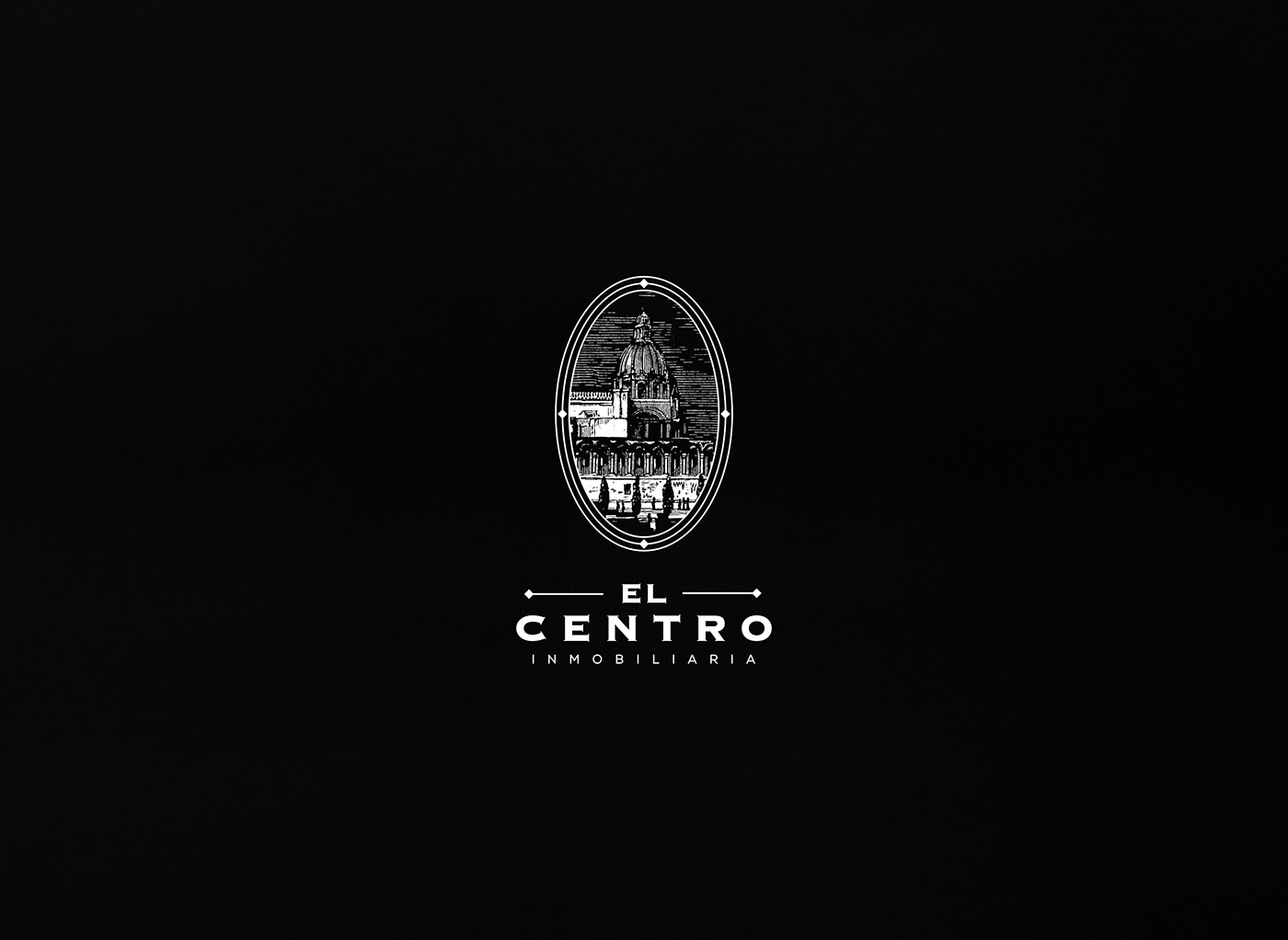
El Centro Inmobiliaria
El Centro; Sales and marketing agency specialized and focused on real estate industry, based in Guadalajara, Mexico. Their services are tailored marketing strategies, they operate projects for their clients from a team formed by professionals specialized in sales, brand development, marketing, statistics, graphic design, marketing, and strategy. In this project we share the love for Guadalajara where we had the opportunity to get involved with the brand naming, visual identity, branding, the institutional stationery and the booklet or sales book where we communicate the unique experience of living in downtown, focused into the architecture, amenities, new developments to the lifestyle that the downtown area can offer you.
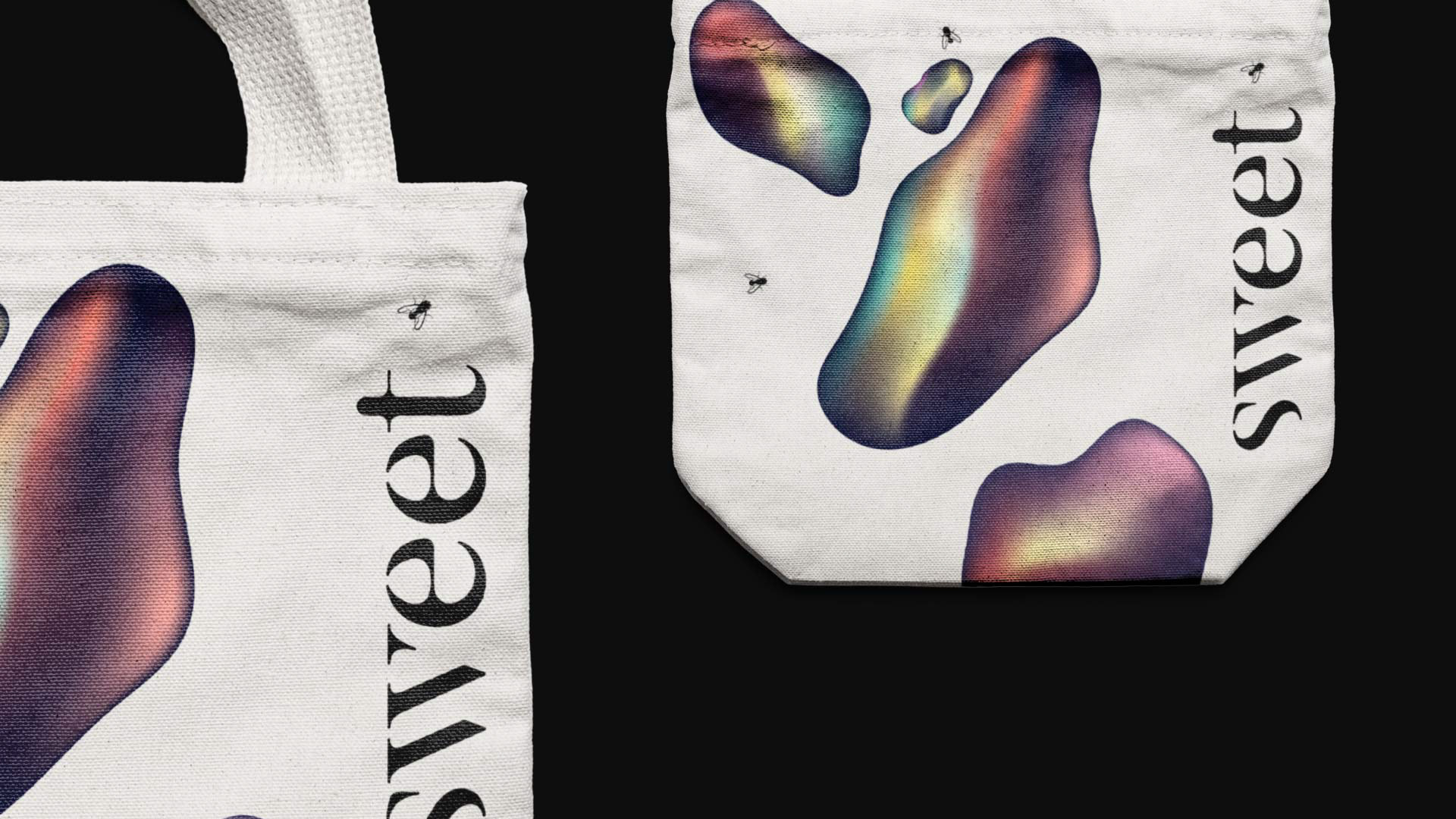
Fresh New Brand Identity for Sweet Films
Fresh New Brand Identity for Sweet Films abduzeedo Jun 26, 2018 Elvis Benício and Diego Bolgioni were invited to create a new brand identity for Sweet Films. The goal of this rebranding was to adapt to the new strategic position and vision of the studio and communicate the message to the market. Sweet Films is a Brazilian boutique studio specialized in video production for advertisements. The design solution that they created included dynamic visual elements made up of fresh components and a new typeface. The final deliverables included a visual identity guideline book, website (UI/UX), stationery and animated signature. Credits Motion graphic: Rafael Fernandes / Graphic Design: Elvis Benicio, Diego Bolgioni Brand identity Concept. After going through many possible ideas about shapes and graphic concept Diego and Elvis realized that it could be interesting to build a metaphorical connection with a fly (as a client) and something that looks yummy (sweet). From this starting point, everything pumped up in their minds and the process began to be playful, upbeat and consistent. The project was approved with success by the client without any changes. (all in!) Stationery. Social kit Visual elements Website Signature Before / after branding

New Logo, Identity, and Packaging for Xenith by Skidmore Studio
“Take the Helm” Established in 2006, Xenith is a brand of helmets and other supporting equipment for American football. Based in Detroit, MI, Xenith is a newcomer to the industry, competing with leaders Riddell and Schutt (established in 1927 and 1918), but in a short amount of time their helmets have been adopted by hundreds of thousands of players at all levels, including youth, high school, college, and the NFL. At the end of last year, Xenith introduced a new identity designed by Detroit-based Skidmore Studio. Designed to harness the raw emotions of the brand personality, the X's strength lies in its bold, asymmetrical strokes intersecting at unexpected angles. It flexes to grow big and bold on packaging, scatters to create an iconic camo pattern and shrinks into a simple, recognizable mark on gear.Skidmore Studio project page Logo. Logo on helmet, before and after. The old logo was bad; not only was the wordmark ugly to look at, hard to read, and weirdly connected but it also looked more like the title treatment for a YA fantasy book series. The new logo is clearly within the sports world as there are plenty of spikes to be seen and while the new wordmark doesn't change the game, the new "X" icon is great. Its asymmetry and slight awkwardness make it feel dynamic and explosive, looking almost like a mark a helmet would leave in another helmet when they hit -- although that may not be a metaphor anyone wants to sell because concussions. Anyway, it's a really great graphic and in the before/after comparison of the helmets above, the improvement is undeniable, going from a gangly-looking "X" that barely fit in the space allotted to a much more robust, better-fitting, identifiable element. The wordmark is more or less okay but the cuts in the "E" and "T" feel gratuitous. I almost liked the one in the "E" because the bottom-left angle of the icon visually connects to it but then the on the bottom-right where it could have aligned with the cut of the "T" it doesn't. I understand the inclination to tie the icon with the wordmark but the result feels forced. Still: Bold! Sports! Yeah! Guidelines. Catalog. Various applications. Equipment. For a football equipment brand this actually makes for a pretty good lifestyle brand as well, almost like a skater or surf brand -- something that competitor Riddell could not pull off. The yellow accent color works very well with the logo and the "camo" pattern (more if it below) is... rad. Across the whole product line, we simplified. The strong black-on-craft aesthetic differentiated Xenith's premium products from its competitors. Messaging focused on moments that athletes could connect with. And a consistent use of camo created a Xenith billboard in every aisle, uniting a wide variety of products across the store.Skidmore Studio project page Packaging. But there is more to a retail experience than looks alone. For Xenith's flagship product, the football helmet, we created an in-store unboxing moment that encourages young athletes to interact with the product. A mysterious, peek-a-boo corner-cut shows off just enough of the helmet, inviting shoppers to pull it out and get hands-on with a product that is designed for ultimate fit and feel.Skidmore Studio project page Helmet packaging. Packaging details. The packaging is bad-ass, with the camo pattern that deconstructs the icon in different ways to generate a fun, active pattern that looks great against the kraft boxes. If they had used gray chipboard of some kind this would have been epic but kraft is a lot more workable so it will definitely do. I like how the "x" icon lives in a yellow box that wraps around the boxes and the use of white silkscreen makes each product name pop clearly. The boxes have a 1990s feel -- in a good way. Spot introducing the new brand. The tape! (At the 0:09 mark) Overall, I think this is a really great redesign. It operates well within the boundaries of sports aesthetics but it manages to offer a fresh perspective and makes Xenith a much more covetable brand.

Noted: New Logo, Identity, and Packaging for Elefante by Interbrand
“Ele-fayn-to, Ele-fahn-to” Introduced in 1941, Elefante is a brand of tomato extract available in Brazil. It was originally owned by Cica, later Unilever, and now Cargill. Design by Interbrand (São Paulo, Brazil office) Related links Interbrand project page Relevant quoteWe understood that people lost connection with family and close friends. So we created Elefante as a brand that gather people around the table. The brand repositioned itself to make people more involved with food and we updated its identity and started to talk right to the customer, like equals.We have brought a new way to talk about all that Elefante believes. Now, Elefante tells and participates of the stories that gather people together.The new logotype is modern and clean, besides that it was designed to remind an elephant body, with clumsy terminals and bold structure. The visual identity explores the idea of the intensity and concentration of tomatoes inside the package, and this is reflected in all its visual language, with the letters always together and the warm colors. Images (opinion after) Logo (with elephant). Pattern. Type treatments. Illustration style. Posters. Notebook. Packaging, before and after. Packaging. New brand and logo introduction (in English). Opinion The old logo barely qualified as one, typeset in small caps in a very generic serif that lacked any kind of appeal. The new logo is quirky and charming with a very funky rounded-ish sans serif with some odd flaring — the “n” in particular stands out but I can also appreciate how it fills the space before the “t”. It’s funny because when I glance at the logo, sometimes I hate it and sometimes I like it. The elephant remains mostly the same, in part because it isn’t a traditional mascot that can be evolved willy nilly but is instead a comic book character, Jotalhão, created by Mauricio de Sousa in 1962 and adopted by Elefante in 1979. Most of its traits remain the same but with a brighter green and sunnier disposition. The new packaging is not a bastion of greatness but it is so much better than the old one, looking friendlier and more… new. The other applications are so-so… The jumbled, overlapping typography is clunky and the illustrations look somewhat unfinished. The pattern is almost okay but the green things — dismembered elephant trunks? — make my eyes hurt. Overall, it’s certainly an improvement that makes the product look more enticing.

Noted: New Logo and Identity for ClassPass done In-house with Triboro
“Step Up your Game” (Est. 2013) "ClassPass, based in New York City, provides access to yoga, strength training, barre, martial arts, pilates, boxing, and indoor cycling classes, as well as use of health clubs via its flat-rate monthly subscription billing service. [In 2011, after spending over an hour searching online for an open ballet class in New York City, 28-year old Payal Kadakia, an Indian American graduate of the Massachusetts Institute of Technology and employee of Warner Music Group, had the idea to create a search engine and reservation system for fitness classes.] Led by CEO and major investor Fritz Lanman since March 2017, ClassPass is the world's largest health club aggregator and has partnerships with 8,500 health clubs in 49 cities worldwide. The company receives a discounted cost from health clubs in exchange for providing the clubs with increased usage." (Wikipedia) Design by In-houseCustom fonts and logo collaboration: Triboro Related links ClassPass blog post Relevant quoteWe redesigned our ClassPass logotype and ClassPass logo (the latter symbolizes the many steps you take with us). We commissioned a new custom typeface called Circuit (it’s a sporty little font, inspired by the connections you make as a ClassPasser). We streamlined design throughout our product. We captured new photography and video for campaigns and projects — all in an effort to make this brand as vibrant and full of life as our customers are on the platform. At its best, the new ClassPass brand celebrates the way you push yourself every time you press “book.” And with all this work, we want you to feel inspired — inspired to do things, to try new things, to find your thing. Images (opinion after) Monogram, before and after. Logo. Color variations. Custom fonts. App. Ads. Your browser does not support the video tag. New identity introduction video. Opinion The old logo was… type. Even for minimalist type-only logos this was a bit of a stretch in how un-designed it was. The gradient “C” was nice-looking but that’s all it was. The new logo now features an ownable device in the shape of a monogram that abstractly blends a “C” into a “P” in an upward, forward (if perhaps slow-moving) motion. The concept is of taking a step forward and I like how they have translated it through the distortion effect that makes the graphic look as if it’s going up a StairMaster. The only thing I wonder is if the transition from “C” to “P” should be more aggressive? Like, right now, it feels almost passive… like it’s slowly making its way up. Still, I dig the effect. The wordmark has gone from all uppercase to all lowercase and it’s quite nice, although using a CamelCase might have been more beneficial to support the monogram. And even though the wordmark operates in the minimalist range, it has a little bit more personality than usual. The more interesting part of the identity, to me, is the custom stroke font… there is something really cool about it and I wish there were more applications showing it in use. The video does make good use of it. Overall, this is a cool evolution that gives the company and its audience something with more personality and recognizability.
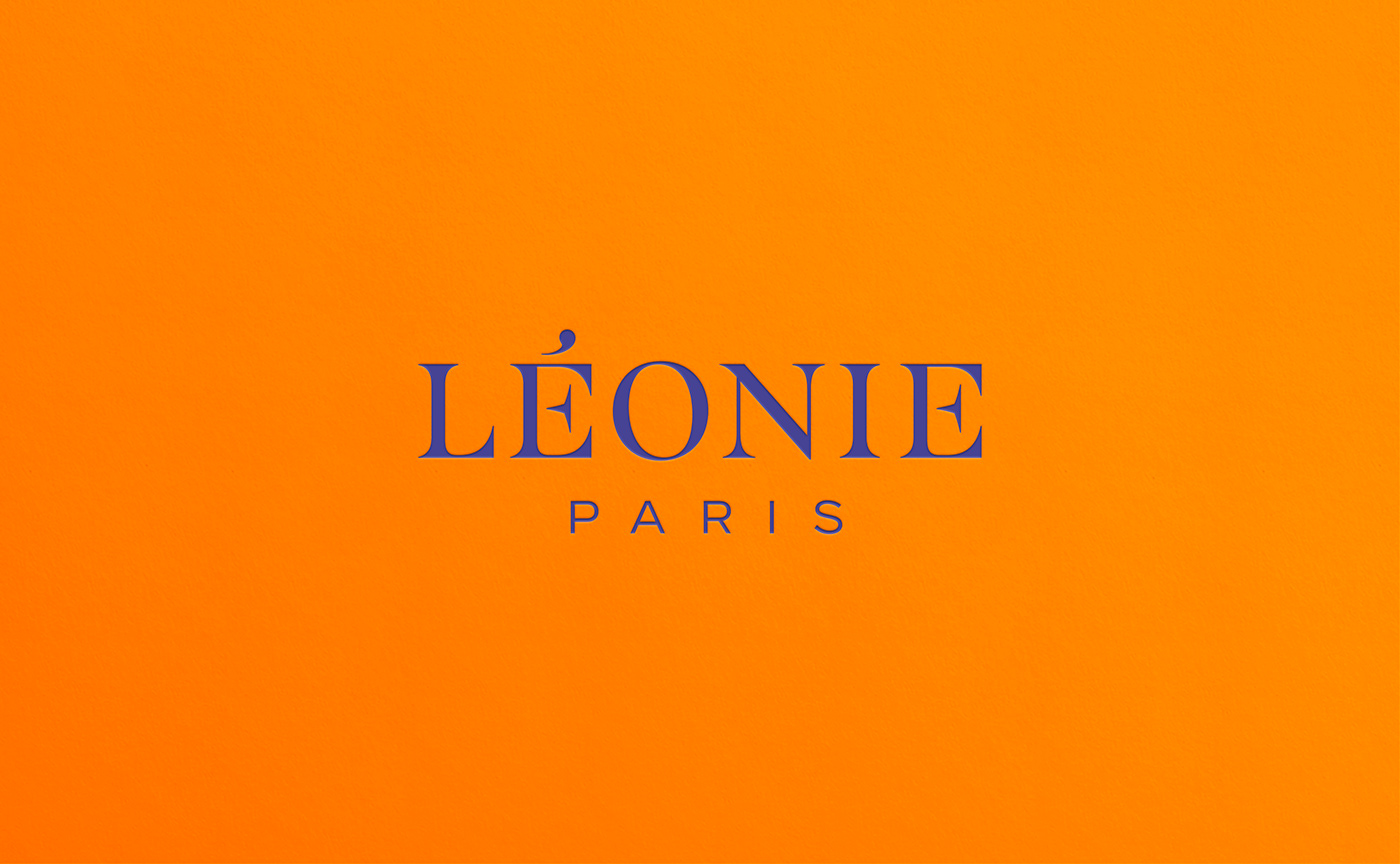
Léonie Paris - Storytelling, brand design, Packaging
La Maison Léonie Paris is a creator of fine confections that combine rare Indian spices with refined French elements. Made by great pastry chefs, these recipes offer a unique culinary experience to be shared on memorable occasions with privileged guests. The project consisted in creating the brand's territory as well as its graphic guidelines based on the name "Léonie", the name of Marcel Proust's aunt who offers him the famous madeleines in the book "In Search of Lost Time". Graphéine invented the storytelling of the brand by imagining the fantasized youth of this famous character of French literature. This "prequel" is told in the form of a fairy tale. It lays the foundation for the enchanting universe of LÉONIE Paris. Its visual identity embodies the promise of a unique blend, a clever balance between a graphic design evoking Indian traditions and flavors and, on the other hand, a typically French elegance and sophistication.
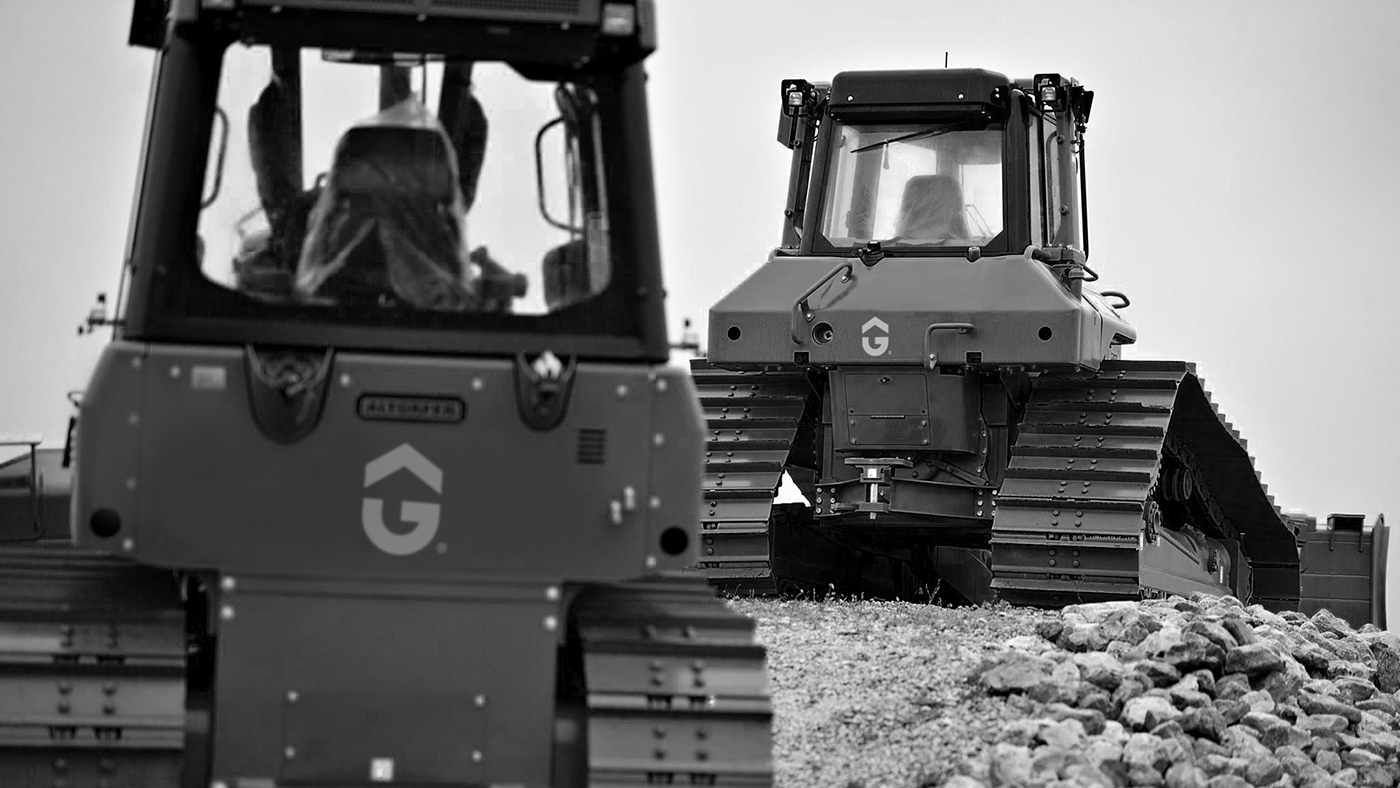
Geometry®
Tags design, designer, graphic, graphic design, color, colour, inspiration, logo, logofolio, branding, branding agency, packaging design, brand identity, stationery, packaging, graphics, behance, dribbble, photography, art, typography, prints, digital art, trendy, skill share, skill share class, adobe, adobe photoshop, mood, art direction, istanbul, london, paris, new york, los angeles, san fransisco, idenity, custom, monogram, design studio, letterpress, brand, brand design, visual identity, corporate, corporate identity, ux, ui, interface, animation, user interface, user experience, startup, start up, minimal, creative, minimalism, simple, negative space, label, fashion, business, badge, illustration, icon, icons, drawing, sketch, freelance, freelancer, logotype, marketing, black and white, designers, website, web, work, web designer, brandbook, brand book, brand manual, catalog, business card, stationery, flyer, clean, basic, guideline, rebranding, re-branding, letterhead, foil, emb
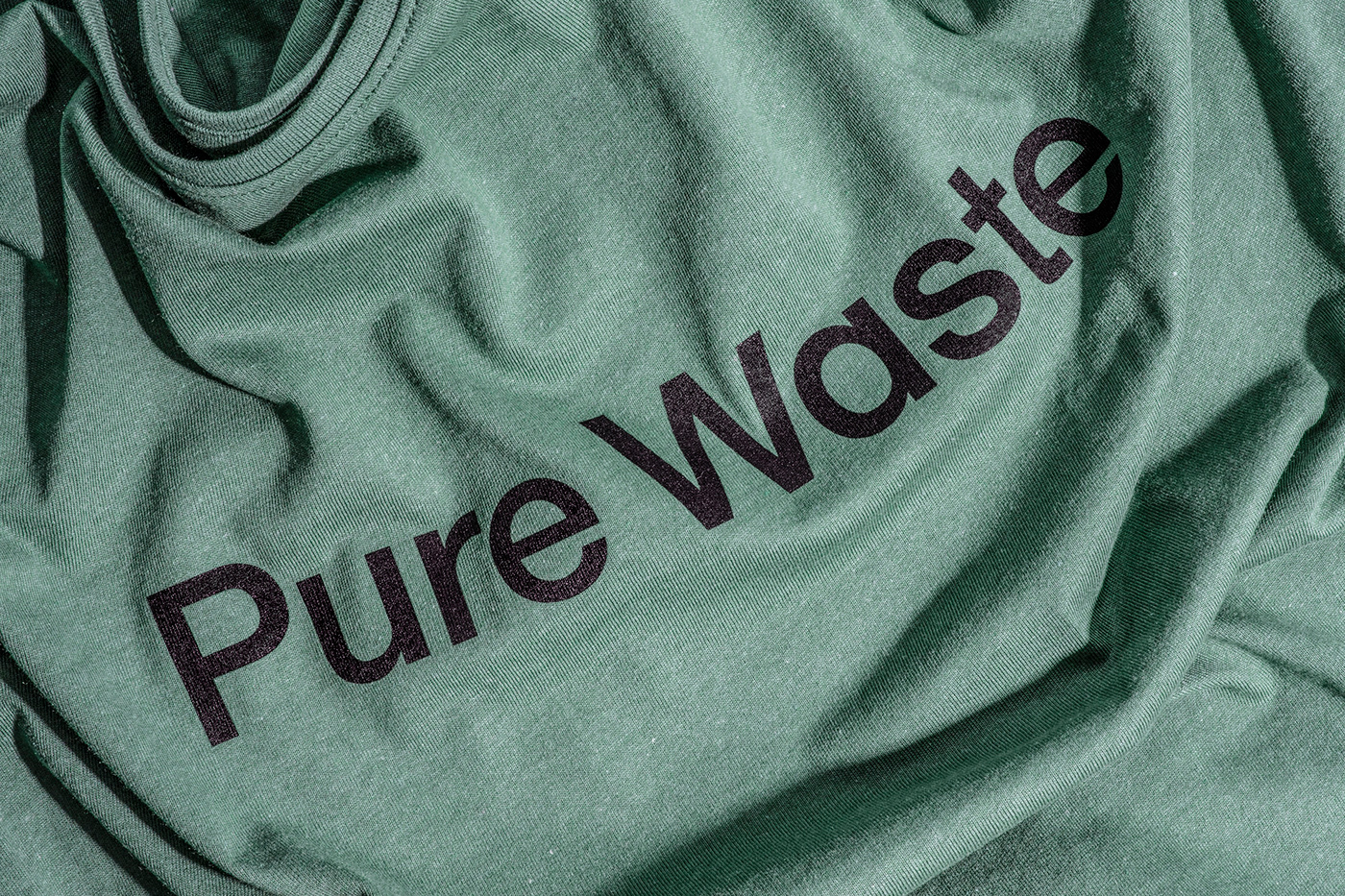
Pure Waste Rebranding
New visual identity and online presence for Pure Waste to facilitate their ambitious vision is to lead the textile industry into a future of sustainability by pushing everyone to "Think again". Their dedication to sustainability and 100% recycled materials inspired the main concept of "recycling" staple typefaces to create something brand new. This typographic base was combined with planet friendly printing choices, hand drawn illustrations, documentary style brand imagery and simple look-book shots celebrating everyday staple clothing.
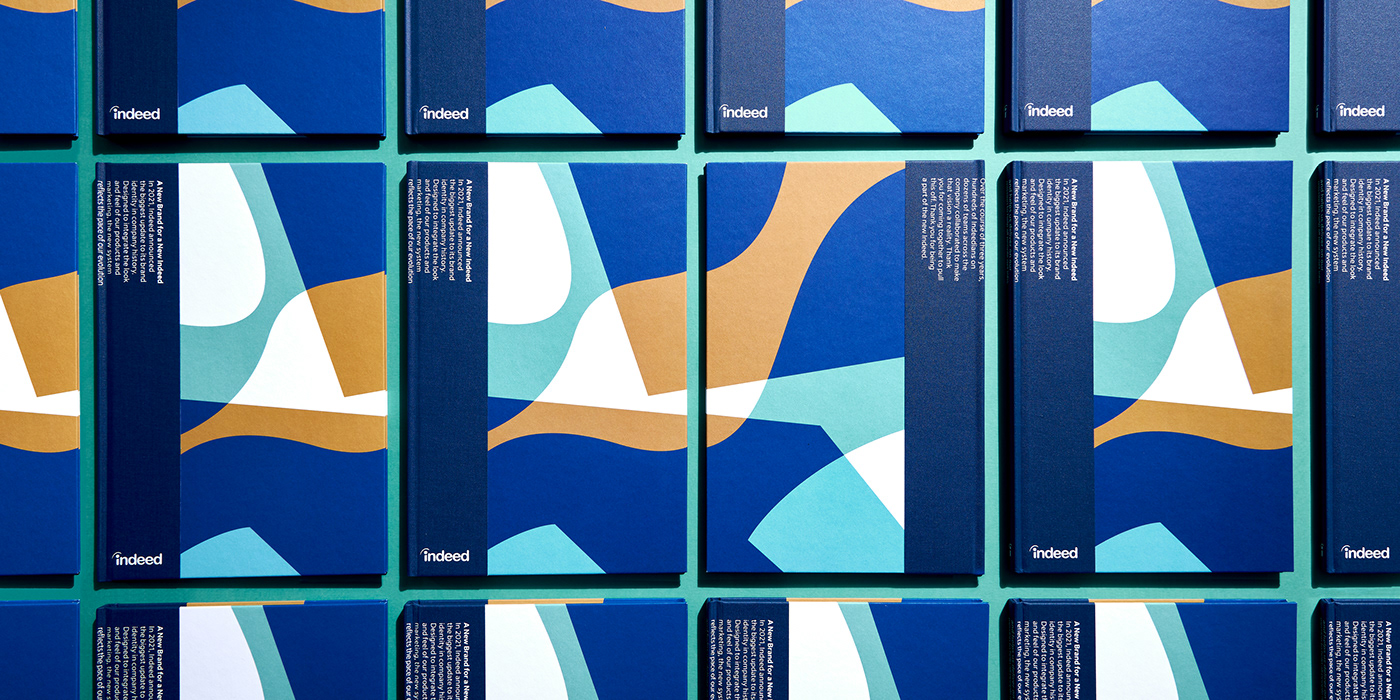
Indeed Brand Book
Over the course of 3 years, the Indeed brand systems team collaborated with the greater company to create a new brand identity. We worked with the team to design an object to act as a thank you to Indeed, a collection of the hard work, talent, and memories created in building this brand identity. The finished book is a celebration of this milestone and a behind-the-scenes look into what brought the new identity to life.

Reviewed: New Logo and Identity for SMK by Andstudio
“Icon by Icon” Established in 1994, SMK (short for Socialinių Mokslų Kolegija or "Social Studies College" in English) is the largest, non state-owned, higher education institution in Lithuania. With two campuses -- one in Vilnius, Lithuania's capital, and the other in the port city of Klaipėda -- the university counts with 2,400 students and offers study programs in the areas of informatics, health, arts, business and public administration, law, and social sciences. Earlier this year, SMK introduced a new identity designed by Vilnius-based Andstudio. Our biggest inspiration were SMK people. Every SMK student is a unique individual, all together they are forming a vibrant, dynamic and active community. To represent every individual we created more than 200 pictograms. Together they become a graphic system that overcomes any limitations of a traditional logo and helps to recognize the brand from a distinctive set of different visual elements.Andstudio project page Logo. The old logo was fairly decent, cleverly balancing the "S" with an abstracted "K" to maintain weight symmetry around the "M" and place an open book underneath aligning neatly with all the letters. The new logo is a contemporary evolution that maintains the same construction sans the book, which I kind of would have to liked to see evolved in the same style. The "K" is a little harder to decipher in the new logo but graphically it's more striking. The full name underneath could use some extra leading to let it breath a little. Logo composition sample. If you miss the book graphic like me, the logo is most often accompanied by a wide range of icons arranged in a grid and these become the centerpiece of the identity. Icons for each study program. The different study programs get their own set of icons, some are literal, some are metaphorical, some are head-scratchers (but that's fine). Apart from these, there are a few dozen others to convey your mood, personality, and habits. A few icons, bigger. [Through an] app SMK students can create their own unique symbol. 4 easy steps of games and tests and the application generates a personal logotype. The exported logotype can be used on any university paper work, social media or merchandising.Andstudio project page Logo generator. You can play with it here (there is an option to do it in English). Logo presentation/animation. I like the concept and the result is visually stimulating and energetic. I don't know if the icons could have been more cohesive somehow? Or perhaps it's the lack of cohesiveness that makes it work? Or even further, these ARE cohesive? Nonetheless, the intention is good and, in application, they clearly help establish a distinctive personality. The whole identity system is based on University's mission, core values, modern approach and open-mindedness. It also becomes a symbol of constant change, where every person has the possibility to create his own unique SMK visual identity.Andstudio project page Stationery. Various materials. Program. At a glance, or for a student seeing this for the first time without the context of what the icons mean, the design can feel random or gratuitous and some of the icons -- like the orange with a leaf -- make you question what in the world this is all about. But at the same time, the design helps SMK look very different from other educational institutions in an attractive, energetic, and youthful way. Website. Exhibitor booth. I would totally flock to their exhibitor space at what looks like a college fair. Regardless of what I wanted to study, I would go see what that was about. Lanyard. Tote bag. Pins. Short video case study of all of the above. Overall, I still wonder if the icons are right or if they are too overpowering or distracting in that they demand to be decoded -- like, why is there a tennis ball and an airplane on the tote bag? -- but, shutting down logic, I find this to be entertaining, exciting, and bold.

Reviewed: New Logo and Identity for Onward by Firebelly
“And Upward” Established in 2017, Onward is a small, nonprofit, consulting firm based in New York, NY, that works with corporations, nonprofits, school systems, and communities to "dismantle systems of oppression, to be the change, and to build an equitable world" with the goal of building personal and organizational capacity for change. Their services include organizational strategy, executive coaching programs, learning opportunities, and tools to support partners in promoting diversity, equity, and inclusion. Lacking a brand and digital presence in its first two years, Onward has introduced a new identity designed by Chicago, IL-based Firebelly. After exhaustive visual exploration, we created an assertive, custom-drawn wordmark. Subtle shifts in the counters of the O and D convey forward movement, while the trimmed edges of the letterforms create a sense of solidity, as well as solidarity. The wordmark lends itself to stacking, a demonstration of strength in numbers.Firebelly project page Logo. Logo, stroked and stacked. Secondary lock-up. There is so much to like about the wordmark -- although I totally understand that there might be a lot to dislike if our subjective preferences differ -- so let's start with the most distinguishing element, which is the angled counterspaces of the "O" and "D" that create a moment of visual dissonance. While the explanation says they are meant to convey forward movement, which they do, I interpreted them more as being a metaphor for creating change from within by doing things that may seem uncomfortable and starting to move things in a new way, starting on the inside. Philosophical musings aside, I love the contrast they generate and how they even help frame the word like book ends, with one slash on each side. The letters themselves are pretty cool as well, with those chunky semi-ink-traps that create some sturdy-looking shapes. If I had one complaint it might be the bowl of the "R", which feels like it was just sliced at the end. The stroke version looks good too as does the stacked lock-up but it's definitely its strongest in full color and one line. Color palette. Guidelines. The olive-led color palette is quite nice and works so good with both orange sparks and black tone-on-tone elements. I would have left the blue out or gone with a really pale one. When broken out from the wordmark, the forward slash functions as a layering, connective or disruptive device. The system's underlying grid is flexible and cohesive, with images cropped at the same 15 degree angle, adding to an overall sense of progressive momentum.The device can be used to frame content, and to tether items together or tape over them, creating new ideas and energy.Firebelly project page Angle of the counterspaces isolated as the main device for the identity. Grid. Tape-like strips. Posters. The identity uses the 15-degree angle from the counterspaces and a contrasting 75-degree angle to create some great layouts with plenty of tension and a great balance of white space, photography, typography, and minimal elements. The supporting serif is nice but perhaps it was a choice with too much contrast, like it's trying to demand a lot of attention -- by the same token, that could be a good thing as it highlights their messaging. Speaking of the messaging, the identity mixes the serif with a sans serif in the same sentence, which is a decent approach but, again, I think the serif is somehow fighting the approach. Still, everything has a great energy. Postcards. Your browser does not support the video tag. Website home page. Onward urges compassion alongside discomfort to create what its leaders call "productive disequilibrium" through empathy-building exercises, self-interrogation and actionable strategies for dismantling systemic racism. This brand is made to express itself, in all its complexities, as a trusted advisor, activist and builder of a better world to come.Firebelly project page Instagram Stories. Notebooks. Tape. Stickers. Tote. Overall, this is a really great identity that gives Onward a bold and confident voice that manages to capture a sentiment of change and revolution without being too antagonistic as they literally try to fight against decades of detrimental habits, attitudes, and systems in companies, organizations, and communities.
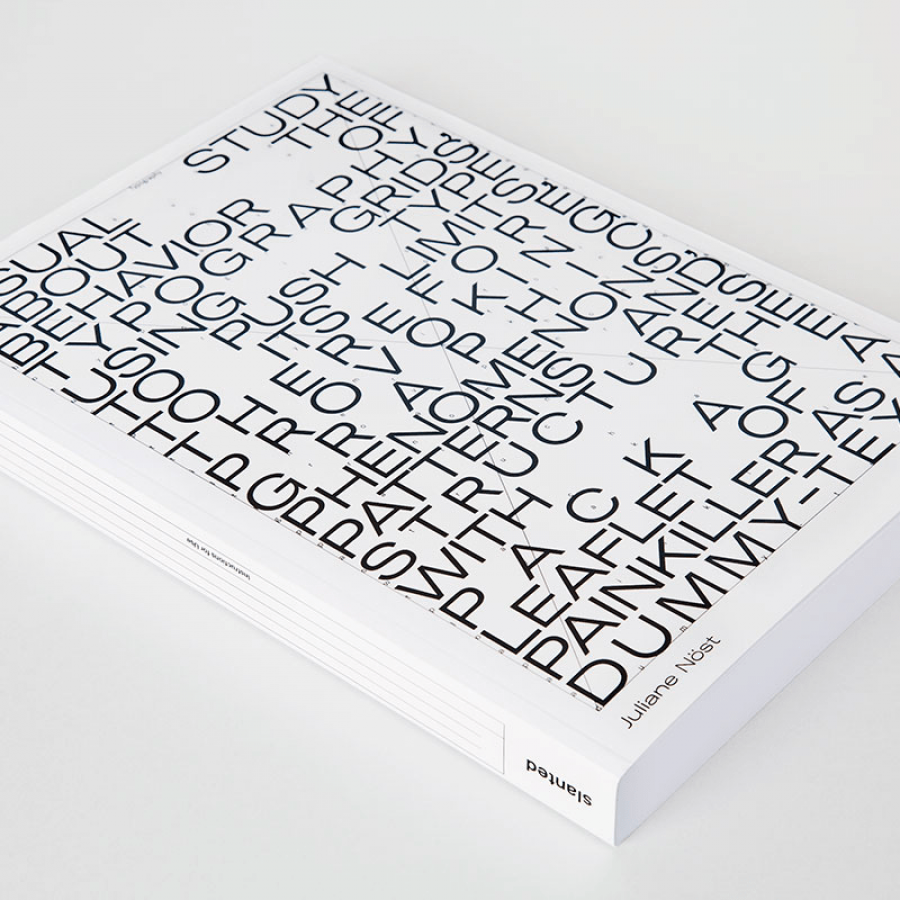
Introducing the Book of Branding, a guide for startups and beyond
Introducing the Book of Branding, a guide for startups and beyond AoiroStudioNov 12, 2019 It's always inspiring to see our friends, from the industry, creating and making cool stuff to inspire others. It's a reward that we will never take for granted and we will will always be supporting. We are featuring the book release of our dear friend Radim Malinic and his Book of Branding. For short, it's an essential guide to the startup toolkit — a guide designed for entrepreneurs, founders, designers, brand creators and anyone seeking to decode the complicated world of brand identity design. With the industry shift to product design and interface design, some designers nowadays forgot the little notion of graphic design like branding for example. This is right fitted time for Radim's new endeavour and we took the liberty to share a sneak peek. Give it a look! Book of Branding aims to show designers how to get the information you need to understand the project and make it the best it can be; as well as providing those on the client-side with advice on how to get the best out of the creatives you're working with. Book of Branding - Sneak Peek Book of Branding by Radim Malinic Brand Nu book titles are available from online stores and high street book retailers in the UK and worldwide. November Universe by Brand Nu Amazon Book depository Foyles Waterstones Blackwell Books Wordery About Radim Malinic Radim Malinic is a creative director and designer living and working in South West London. He is the founder of Brand Nu®, an award-winning branding and creative studio working across a broad spectrum of clients. From individuals and emerging startups all the way to multinational corporates, Brand Nu combines visually rich design, creativity and strategy in its work for the big brands of the future. At the break of the new millennium, Malinic moved to the UK to explore the expansive music scene, only to find even an even greater interest in art and graphic design. Since then his eclectic interests have seen him working with some of the biggest brands, companies and bands in the world. Clients include Harry Potter Platform 9 3/4, 007 Store, Coca Cola, Google, Adobe Systems, WWF and USAID, among many others. Brandnu.co.uk Bookofideas.co.uk

Reviewed: New Logo and Identity for Oklahoma Christian University by Switch
“Everything’s A-OC” Established in 1950, Oklahoma Christian University (OC) is a private Christian university in Oklahoma City, OK, offering undergraduate and graduate programs to approximately 2,000 students. The university counts with 94 full-time faculty and, along with students, they participate in mission opportunities around the world. Their athletics teams, the Eagles, compete in NCAA Division II. With the start of the 2019 - 20 academic year, OC introduced a new identity designed by local firm Switch. Samples of old identity. The primary finding during our interview/discovery phase was that OC wasn't many of the stereotypical things you associate with college life. There is no Greek system, football team, or expected university architecture.In search of where OC pride came from, we had to pivot from the normal way of thinking about university pride. We found that when we asked about why people were proud to be associated with OC, there was always a story -- a trip, a class, a professor, a friend.We constucted OC's new messaging strategy around this concept: The World Awaits Your Story. Rather than abstract statistics and rankings, the new voice of OC would be shared through real, tangible action, experience, and results.Switch project page Logo. Your browser does not support the video tag. Sub-brands. I'm not sure if the holding shape in the old logo had any particular meaning beyond just a shape where "OC" fit decently but beyond that, it was a slightly painful logo to appreciate, not just for its amateur shading but for the poor construction that created little bubbles on the corners of the holding shape. At first I thought it was a problem with one file I found but, nope, that was the official logo applied everywhere. Anyway, it had the right idea in the condensed typeface for the wordmark to be able to fit that long name -- unfortunately, they used fake small caps on it. The new logo maintains the same condensed typeface for the wordmark but introduces a great "OC" monogram with a perfect circle "O" and half perfect circle "C", that on its own can feel literally half-finished but when used in application at the edge of a layout it creates a great effect. Even on its own I do like it and the condensed wordmark is a great visual contrast. I'll admit that the stacked wordmark, with the "Y" sticking out to the right makes my alignment neurons short-circuit because it was so close to being fully justified but I think they did the right thing in letting be as is. The sub-brands are crisp and they solved as well as they could the really long names of some of the department and colleges. The cost of implementing a complete rebrand is not easy for any organization, much less a private university. In order to offset this cost, we designed a smart system that allowed OC to retain existing brand installations around campus.Previous to the rebrand, OC's primary typeface was Standard Condensed. By keeping the typeface in the brand system and reimagining its use, it allowed almost all wayfinding and department signage to remain untouched while still consistent with the new brand.These typographic decisions saved the university substantial costs in the campus rebranding effort.Switch project page Guidelines. Brand book. During the Discovery process, we learned that there was frustration among academic leaders that their admissions materials were the same from department to department. The OC brand system now allows for variation in color and layout, allowing each department to show their personality while remaining consistent with the university brand.While the core brand system of logos, type and color were designed to last for decades, a geometric pattern system was implemented for the launch of the brand. This was designed to show the full scale of the new color system and introduce the brand in an exciting way. In the future, other campaigns will take over while the core brand remains intact.Switch project page Various applications. Welcome kit. Posters. Publications. The applications look really great. They are lively and energetic but still manage to convey a certain conservativeness that's appropriate for the university. I love how well they mix the condensed sans with a complementary round-ier, loosely-spaced sans serif, all of it in uppercase. And, as I mentioned in the logo paragraph, the monogram used on the right edge of the layouts looks so good. Your browser does not support the video tag. Website on desktop. Your browser does not support the video tag. Website on mobile. Interior graphics. Poster. Banners. Signage. Backpacks. T-shirt. Identity introduction video. Overall, this is simply very well executed from top to bottom with clear and concise messaging and nothing feels out of place or like a far-fetched reach. The university knows and understands it's a small, private Christian university and now presents that proposition in a relatively exciting way.

Noted: New Logo and Identity for Action for Children by ASHA
“A Star is Reborn” (Est. 1869) "From before they are born until they are into their twenties, Action for Children helps disadvantaged children across the UK. We do it through practical services and programmes that are proven to work. We help children through fostering or adoption. We intervene early to stop neglect and abuse. We make life better for disabled children. We influence policy and advocate for change. Nearly 7,000 staff and volunteers run over 600 services, from family centres to intensive support services, youth work to residential care homes." Design by ASHA (Cheltenham, England) Related links ASHA project page2017 Brand New Review Relevant quoteA pragmatic, hands-on approach characterises the way Action for Children works and this inspired ASHA to create the concept ‘We Are Family’ as an internal driving idea to help shape the new brand strategy and positioning.A pragmatic, hands-on approach characterises the way Action for Children works and this inspired ASHA to create the concept ‘We Are Family’ as an internal driving idea to help shape the new brand strategy and positioning.A headline font: Appetite, was chosen specifically for its friendly character. Its distinctive look and feel means communications can be created cohesively across a wide range of messaging requirements, helping to bring the 500+ services across the country together as part of one big, united family.The organisation’s name presented a challenge for ASHA as it is also a statement. The solution was to create a signature set within a playful star shape to reflect the warm, friendly and accessible character of the organisation. This icon is recognisable from a distance and can sit on a wide range of colours, photography and illustration. This solution has liberated the organisation to create communications with flexibility, vibrancy and variety. Images (opinion after) Logo. Brand positioning. Bubble devices. Brand book. Flyers. Star-shaped brochure. Website on mobile. Balloons. T-shirts. Pin. Mugs. Cupcake flags. Tote. Opinion The old logo and identity had the usual thoughtfulness and complexity (the good kind) of a Johnson Banks project. Driven by language and tight configurations, the identity helped convey the various messages of the organization in a relatively dramatic way. It created a sense of impact and significance but I am sure it was a pain in the butt to implement and perhaps it got too serious. The new logo is a simple star with happy charming script typography inside. It signals “children!” quickly, efficiently, and evocative in a heart-warming way. No extra words needed. I’m not a fan per se of the logo — the curved points of the star are a little too softened and the script inside is very wonky (that “re” pair is cringy) — but it gets the job done. The secondary typeface, Appetite, is far too cute and playful for my taste, I even find it a little irritating, but, again, it sends quick signals that this is an accessible, active, do-good organization. I could totally do without the speech bubbles which don’t seem to make an appearance in the identity anyway. Overall, this isn’t particularly interesting or exciting but it efficiently sets up the organization as being children-first, perhaps to a fault as at times it starts to look like a pre-school organization, so maybe the answer for Action for Children lies somewhere between the last identity and this one.
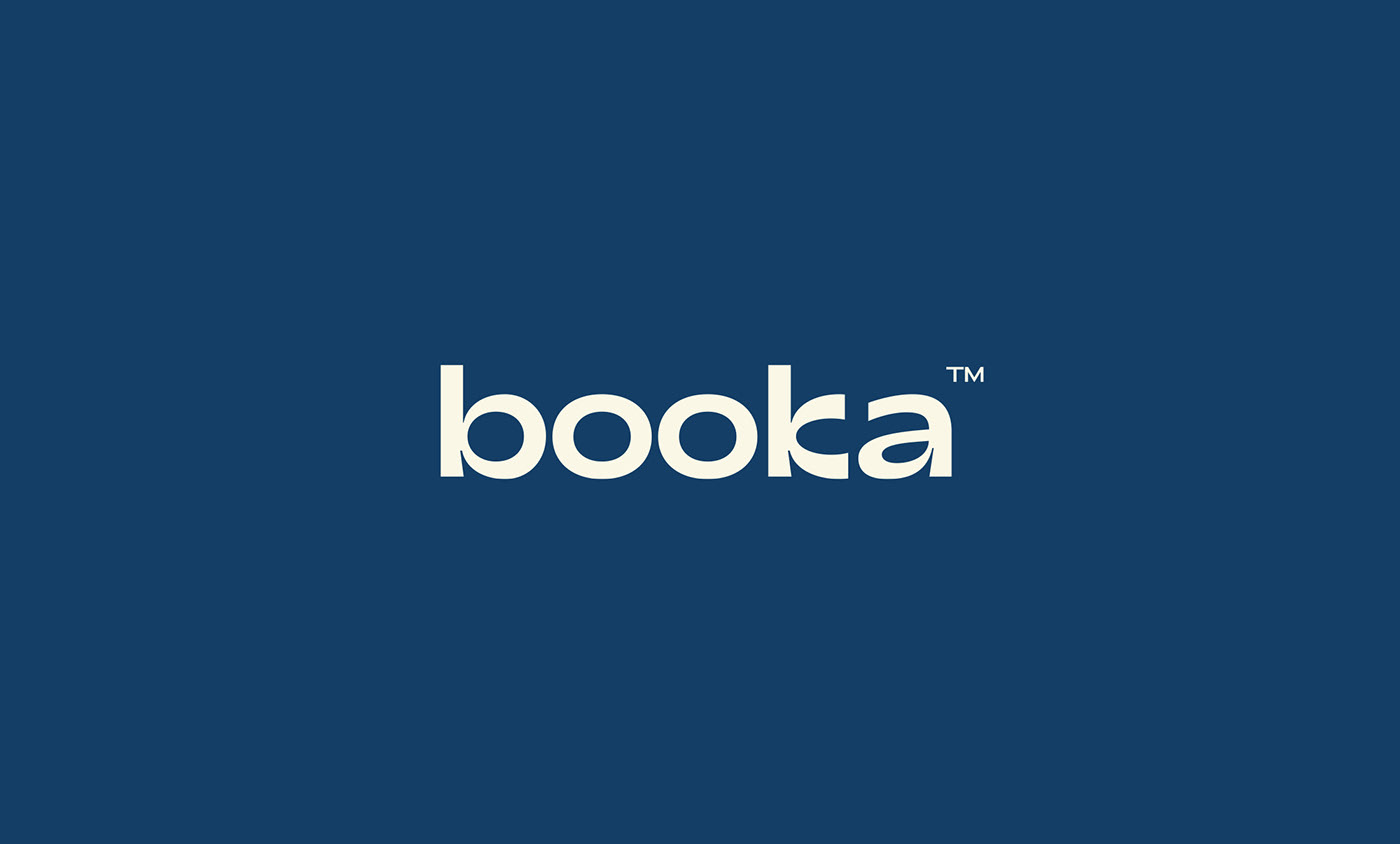
Booka?
Booka is a new, digital service that aims to make your life a little bit easier by giving you direct access to the calendars of a wide variety of professions, ranging from carpenters and plumbers to real estate agents and car dealerships. By accessing their calendars, you can see when they are available, book an appointment directly, and skip the hassle of endless phone calls and e-mail conversations. We developed a brand strategy, name and visual identity for the start-up, aiming to set them apart from other web-based services through humor and a focus on the interaction between the customer and service-provider.

Reviewed: New Logo and Identity for 2018 Brand New Conference by UnderConsideration
“Concrete Jungle” This past September we celebrated our 10th Brand New Conference -- we've been doing it for 9 years but in 2016 we did 2 of them so not yet our 10th anniversary -- in New York, NY. Having done it there four times before we weren't sure what we could draw from the city to base the identity on. Turned out, that that something was the easiest and most obvious thing about New York... A few other links before getting into it Full set of photos of the materials here; believe it or not, the ones shown here are a limited selection. Our brief presentation during the conference with more behind the scenes photos, videos, and stories can be found here. A copy of the program, cube, and/or t-shirt can be purchased here. Concept This year's identity is based on a cliché but we liked where that cliché took us so we went with it: New York is a "Concrete Jungle", ergo we are going to use concrete. This wasn't conceived as a metaphor but as the literal, core ingredient through which we would standardize all the materials. Later on, we realized that this concept was meant to be, as written down in the annals of hip hop 8 years ago... Your browser does not support the video tag. Snippet of Empire State of Mind by Jay-Z featuring Alicia Keys. Wait for the TWO highlighted lyrics. The second one is everything. Part of what makes New York a "Concrete Jungle" and, no big reveal here, are the buildings. Aside from being tall, one cool thing about New York buildings are the inscriptions carved unto some of them, regardless of whether they are a church, a bank, or a school. One of the great things about these inscriptions is the variety of typefaces and lettering they use. A small sampling of etched inscriptions and signage on New York buildings. Top two photos by Paul Shaw, all others by Wally Gobetz. One style that we thought we could expand on is the high-contrast sans serif with its calligraphic/chiseled structure. As a way to further channel the cacophony that New York can be we decided that instead of choosing just one font or type family we would use a bunch of high-contrast sans serifs together. We chose Chap (Black to be specific) from Schick Toikka as the primary font and we added Hoefler & Co.'s Peristyle, Typotheque's Valter, Fatype's Beausite, and Frere-Jones Type's Bosca and Bosca Compressed -- that are not yet available but we got to take out for a trial spin. The five high-contrast sans serifs at play. No Logo Although we had to decide on one treatment early on to use for the production that started six months before the conference, we decided to not have a single logo that would be repeated but instead allow the different typefaces to take on different configurations and allow the typography to set the tone. The closest we got to a logo. Different logo-ish treatments. Concrete... For Real To reiterate: what you will see in the images to follow is made with real concrete. All 1,112 covers; 1,342 badges; and 939 cubes. These are not renders. Your browser does not support the video tag. Pouring concrete into molds -- just one of the many steps in the production process. Programs Program covers. Once we decided to use concrete, the first step was figuring out how, where, and, well, HOW. We eventually decided we would apply it to the covers of the program, the attendee badges, and a little memento cube. The program has a slab glued on the cover, offset half an inch from the spine so that it would open smoothly. One unexpected -- and quite welcome -- outcome was that each slab of concrete came out in a different shade of gray and slightly different texture that yielded some pretty great variations. A few different views of the covers. Spine detail. The air bubbles added a great range of texture. Close-ups of the typography. If you are curious about how fragile a slab of concrete is on a book, we put it to the test: first we dropped it from the top of our roof but the tile glue we used proved to be too effective so we had to take more drastic measures... Your browser does not support the video tag. Sound is NSFW. Two punchlines in this video, for the price of one. (Bonus: shot-by-shot comparison of punchline number two.) For the interior of the program we went with a dense, boxy approach, much like what we had established on the website. Your browser does not support the video tag. Sample spreads. Badges Badges. We created the pieces of concrete for the badges before we even had a finalized design for the overall badge. We don't recommend this approach! But we've done so many badges by now that we knew we would be able to retrofit a design to the piece of concrete. Eventually it involved mixing the concrete with high-end Silly Winks -- we say that both sarcastically and as an oxymoron -- as well as a pretty nice gray stock from Colorplan (one of our sponsors) and adding each attendee's info on a label. A few different views of the badges. Cubes! Cubes. These cubes don't really have a purpose other than them being little cubes made of concrete with "BNCONF" on them. We could have easily skipped them but after we did a prototype we were not able to let go off the idea. They are 2 × 2 × 2 inches. A few different arrangements. Bags Bags. A cloth tote bag didn't seem right this year as they are too floppy in contrast with concrete. We found some sturdy gray paper bags that, when filled with goodies, looked like a block of concrete -- with some imagination, sure. We thought it would be a good break from our past approaches to print the full schedule of the conference on the bags. Not the most useful schedule but we thought the typographic texture was rather cool (and the schedule was on the program as well so it wasn't like it was the only place to see it). A couple of views. T-shirts T-shirt. We originally wanted to mix and match three or four different shades of heather gray as the t-shirt base but unfortunately the inventory was not in our favor. We selected a mid gray and printed some big Bosca type on it using water-based printing, which colors the fabric instead of putting ink on top of the fabric, so it has a super nice soft feel. A couple of details. Stage Letters Stage letters. By now you are probably thinking "Oh, no, they didn't" and you would be right, we did not. The letters are not made out of concrete. We thought about it, no doubt, but then realized both how difficult it would be and how impossibly heavy they would come out. We worked with a local carpenter who makes props for the theater in town and he made them out of insulation foam and a very convincing paint job. From far away to up close. Screen Graphics Last year we counted with the help of Studio TBT who created some awesome and snappy motion graphics. We thought we would earmark a budget for it this year but ultimately decided to spend that money on an endless supply of bags of concrete, so we were left to our own devices. Past speaker and friend of the agency, Mark Kingsley, who always prepares a soundtrack for the breaks during the conference had suggested a punk theme to this year's music and we took that as a cue to make some modest speaker introductions. We made three different "styles" and each one has a subtle flashing sequence at some point in the video. Your browser does not support the video tag. Your browser does not support the video tag. Your browser does not support the video tag. Three different music clips and animations. We realize these are not very impressive but perhaps you might be surprised to learn that the music and flashes were synched using... Keynote. A good lesson here is to do the best that you can with what you have. And this last little clip we think sums that up nicely with an animation that punches above its weight using only close-up photos of the cubes and some semi-randomly-placed typographic treatments that helped open each day of the conference. Sound on! Your browser does not support the video tag. Opening intro for the conference. Instagram Love Your browser does not support the video tag. People sharing the conference materials on Instagram. Many thanks to everyone that expressed their appreciation of the materials on Instagram. It's one of the most rewarding gestures for us. That's it! We have no idea where to go from here in terms of what 2019's identity will be made of or how it will be made but we are going to be in Vegas, so there is no shortage of inspiration. If you know you don't want to miss out, we are currently in pre-sale for the 2019 Brand New Conference on October 17 - 18!

Noted: New Logo and Identity for KABOOM!
“I Wanna Be in the Boom Where it Happens” (Est. 1996) "KABOOM! works with communities to build incredible, kid-designed playspaces that help give kids in every zip code the opportunity to thrive. Kids who don't have access to play miss out on childhood and are denied critical opportunities to build physical, social and emotional health. For more than two decades, we've teamed up with bold, inspiring partners and community members, starting with the kids themselves, to understand each neighborhood's unique aspirations. Then we build incredible places to play, inspired by their design, courage and leadership. Over the last 23 years, we've built or improved 17,000+ playspaces, engaged more than 1.5 million community members and brought joy to over 11 million kids. As we look to the future, we'll continue our efforts to build collective action and community opportunity, spark hope and enable kids to reach their full potential. And we promise that we won't stop until we put an end to playspace inequity. For good." Design by N/A Related links KABOOM! Twitter announcementKABOOM! Brand Book (PDF) Relevant quoteOur logo is the core of our brand identity. The mark in our logo positions KABOOM! as the spark for playspace equity. With a new refined aesthetic to one that’s contemporary and established, our logo sets up KABOOM! to be known by its full, true mission to not only build playspaces but to ensure playspace equity for every kid. Images (opinion after) Logo. Mark and social media avatars. Mark with kids. Color palette. Business cards. Sketch pad sheet. Banner. Playground sign. Opinion The old logo was energetic for sure but it felt too much like just a comic book graphic and not enough like a large nonprofit organization. The name alone is enough of a kaboom that it doesn’t need the full-on bombastic graphic treatment as the new logo demonstrates. The abstracted “K” that looks like a spark provides just the right amount of visual excitement in an otherwise restrained logo. The wordmark is chunky and with rounded corners, both of which make perfect sense for the name and focus of the organization. I really like how the curve of the “K” mark aligns with the angles of the “A”, making for a pretty clever integration of the two elements. The “K” mark on its own is pretty strong too and looks really good in a solid color — it will need a good year or two to become easily associated with KABOOM! but it has potential. The applications are a little shy at the moment but there is a decent start there with the loopy arrows and squiggles. Lots of room to grow with such a solid logo but definitely still has to evolve, which will probably happen once they move from renders to actual applications. Overall, a great, feel-good logo evolution for a fantastic, feel-good organization.
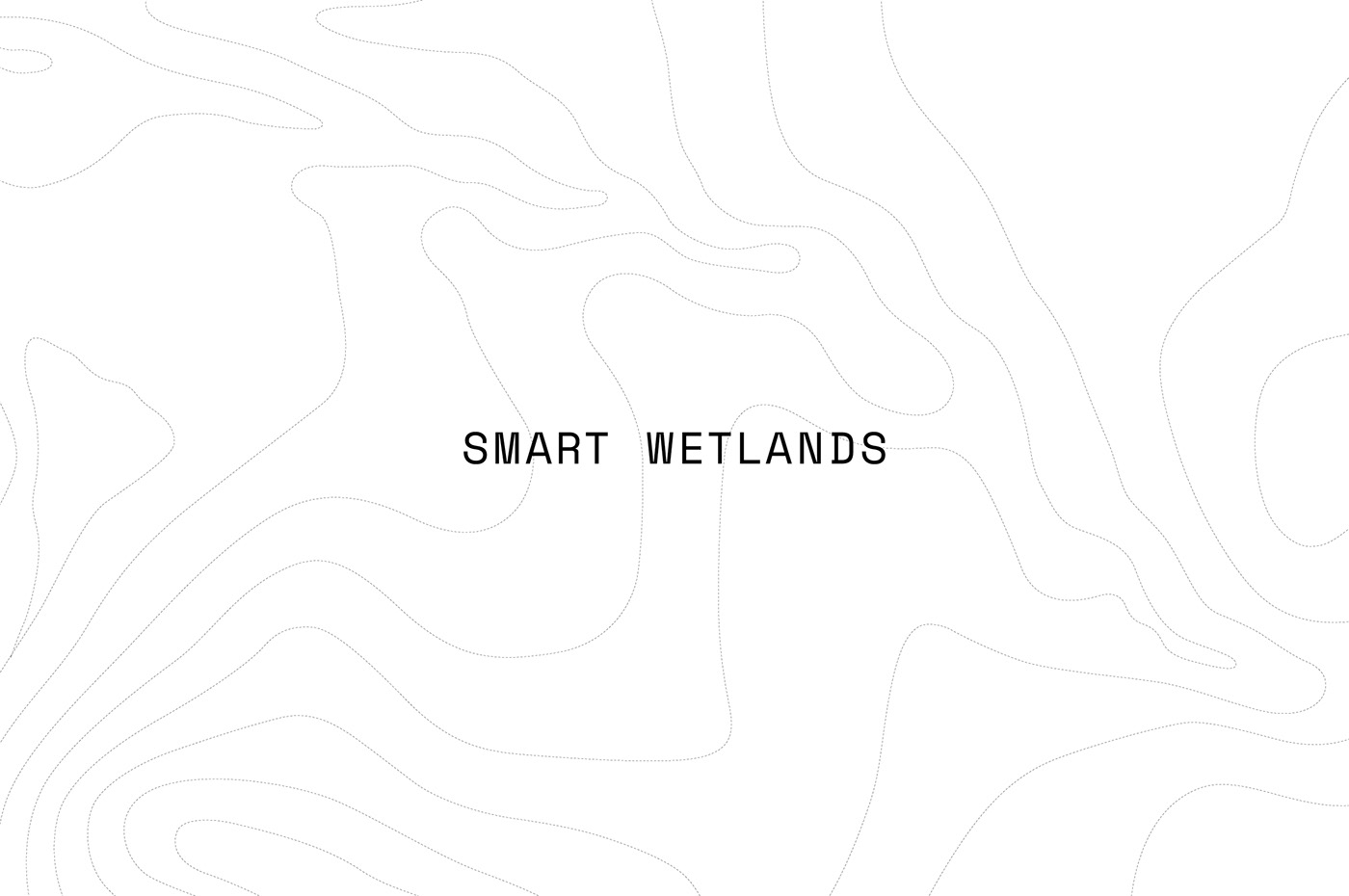
Smart Wetlands
Project Tags: brand guidelines, custom typeface, font, typeface, type, collection, minimalist, basic, simple, texture, patterns, mark, bold, bright, grid, shape, brochure, catalogue, photography, responsive, typographical logo, minimal logo, modern branding, unique, minimal identity, logo inspiration, best logo, lettering, ux, ui, animation, user interface, user experience, startup, start up, minimal, creative, minimalism, business, badge, illustration, icon, icons, drawing, logotype, marketing, designers, website, web, work, web designer, brand book, brand manual, catalog, business cards, stationery, flyer, clean, guideline, rebranding, re-branding, letterhead, foil, emboss, landing page, awarded, sustainability, presentation, Brooklyn, New York, NYC, color palette, branding agency, editorial, keynote, quality, real estate, responsive, unique, visual identity, black

Smart Wetlands
Get access to thousands of freshly updated design inspiration pieces by adding Muzli to your browser.
Loved by 800k designers worldwide, Muzli is the leading go-to browser extension for creative professionals.